R version 4.3.1 (2023-06-16)
Platform: x86_64-apple-darwin20 (64-bit)
Running under: macOS Sonoma 14.1.1
Matrix products: default
BLAS: /Library/Frameworks/R.framework/Versions/4.3-x86_64/Resources/lib/libRblas.0.dylib
LAPACK: /Library/Frameworks/R.framework/Versions/4.3-x86_64/Resources/lib/libRlapack.dylib; LAPACK version 3.11.0
locale:
[1] en_US.UTF-8/en_US.UTF-8/en_US.UTF-8/C/en_US.UTF-8/en_US.UTF-8
time zone: Asia/Kolkata
tzcode source: internal
attached base packages:
[1] stats graphics grDevices utils datasets methods base
other attached packages:
[1] palmerpenguins_0.1.1 lubridate_1.9.3 forcats_1.0.0
[4] stringr_1.5.0 dplyr_1.1.3 purrr_1.0.2
[7] readr_2.1.4 tidyr_1.3.0 tibble_3.2.1
[10] ggplot2_3.4.4 tidyverse_2.0.0 downlit_0.4.3
loaded via a namespace (and not attached):
[1] gtable_0.3.4 jsonlite_1.8.7 compiler_4.3.1 tidyselect_1.2.0
[5] scales_1.2.1 yaml_2.3.7 fastmap_1.1.1 R6_2.5.1
[9] generics_0.1.3 knitr_1.45 munsell_0.5.0 pillar_1.9.0
[13] tzdb_0.4.0 rlang_1.1.2 utf8_1.2.4 stringi_1.7.12
[17] cachem_1.0.8 xfun_0.41 timechange_0.2.0 memoise_2.0.1
[21] cli_3.6.1 withr_2.5.2 magrittr_2.0.3 digest_0.6.33
[25] grid_4.3.1 rstudioapi_0.15.0 hms_1.1.3 lifecycle_1.0.4
[29] vctrs_0.6.4 evaluate_0.23 glue_1.6.2 fansi_1.0.5
[33] colorspace_2.1-0 rmarkdown_2.25 tools_4.3.1 pkgconfig_2.0.3
[37] htmltools_0.5.7 COMPUTER BASICS
Dr. Ajay Koli | SARA Institute of Data Science | India
Background image by Freddie Marriage

Reference
These slides are prepared using this book “Computer Basics: Absolute Beginner’s Guide” (10th edition, 2023) by Michael Miller.

Table of content
Computers

Mid 1980s.
🥶 First time you sit in front of computer.
In 21st century computers are extremely important part of our life.
🧗🏽♀️ Goals
How to use your computer system.
How computers work
How to start using computers
Learn about computer hardware and software.
About operating system (OS) and the internet
Writing letters and editing photos, listening to music and watching movies and TV shows
Searching information, sending and receiving email, using social media/networking.
UNDERSTANDING
COMPUTERS
What your computer can do
-
Good for getting online
- “Web” or World Wide Web (www)
- web browser
Good for social networking
Good for communicating
Good for sharing photos and home movies
Good for entertainment
-
Good for keeping informed
- search engine like Google
Good for work
Good for play
Personal computer types



Inside a perosnal computer
All PCs have in common is a core set of components:
The computer
hardware: physical parts of your computer you can see and touch.Computer
software: the programs and applications you run on your computer
The Motherboard
Home to Almost Everything
Computer chips and circuit boards are connected to a big circuit called a motherboard

Microprocessor:
The main engine
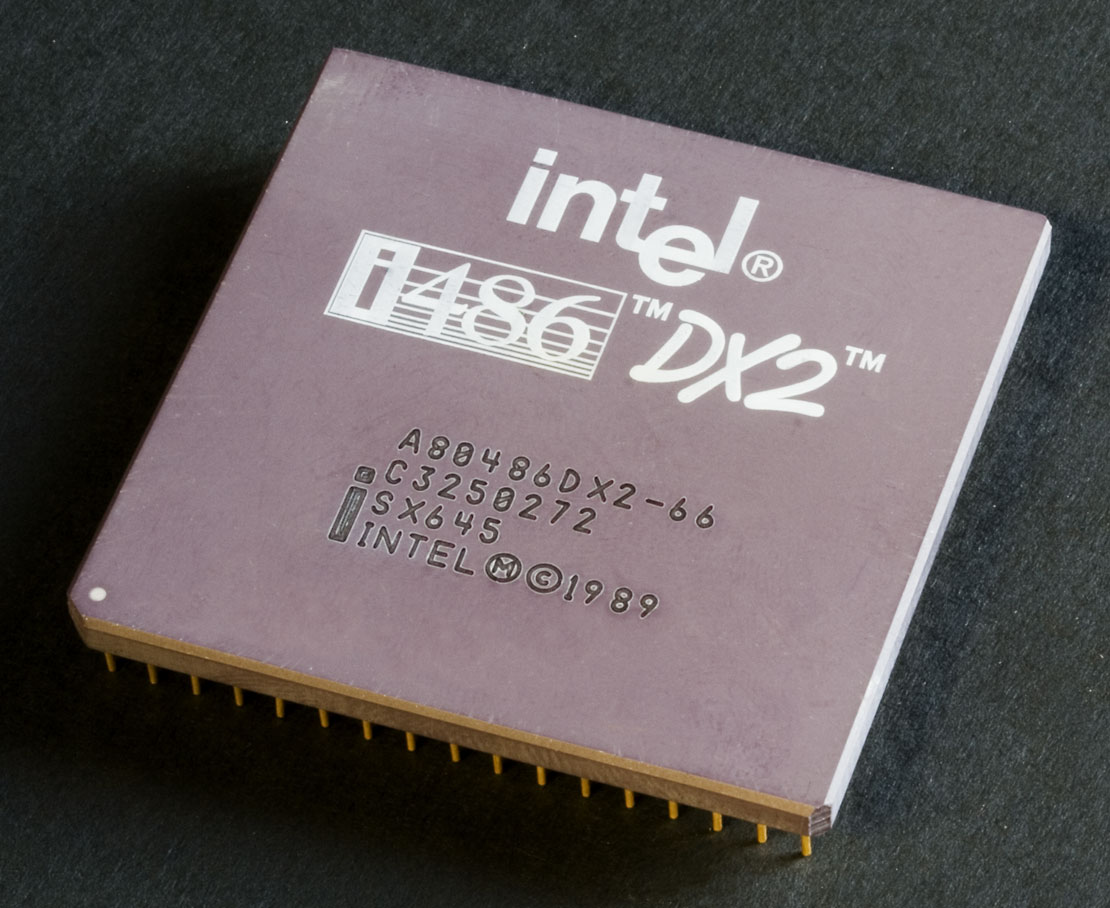

The specific chip that controls your entire computer system is buried on the motherboard. This chip is called a microprocessor or a central processing unit (CPU).
- Its speed today is measured in
gigahertz(GHz)
Computer memory
Temporary storage

Your instructions to computer are temporarily held in the computer’s random access memory (RAM).
The more memory that’s available in a machine, the more instructions and data that can be stored at one time.
You can add extra memory
Computer memory
Memory is measure in terms of bytes.
one thousand bytes (1,024, to be exact) = a kilobyte (KB)
one thousand kilobytes (1,024, to be exact) = a megabyte (MB)
one thousand megabytes= a gigabyte (GB)
most computers come today with 4GB memory.
Hard Disk Drives
Long-term storage
It permanently stores all your important data. It can store multiple terabytes (TB) of data.

Warning
- If you try to reformat your hard disk, you will erase all the programs and data that have installed on your computer – SO DO NOT DO IT!
Solid-State Drives (SSD)
Faster Long-Term Storage

This type of storage is much faster than traditional hard disk storage
SSDis little more expensive than hard disk.
Keyboards:
Computers receive data by reading it from disk, through modem or receiving input directly from you, the user.

- An
input device, the most common input device you use to talk to your computer is the keyboard.
Mice and Touchpads
Point and click input devices

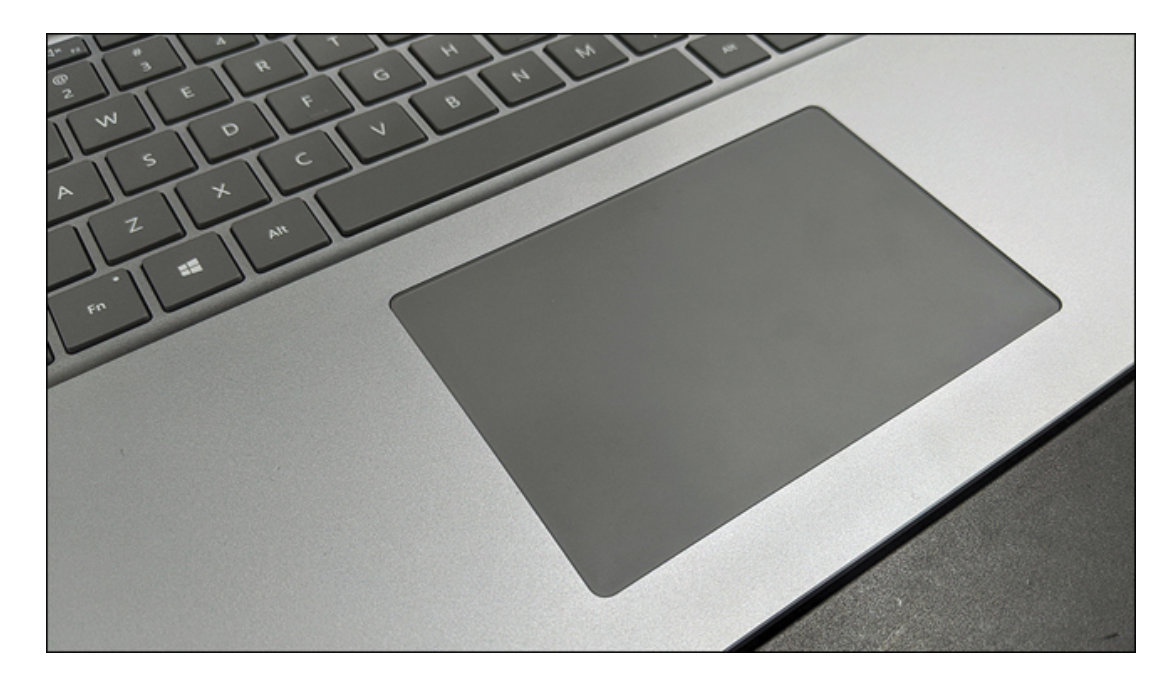
Network Connections
Getting connected
A network enables you to share files between multiple computers, as well as connect multiple PCs to a single printer or scanner.
To share broadband internet connection to that all your computers connect to the internet.
You can connect computers via either wired or wireless networks. Connecting a wireless network is as easy as buying a wireless router.
Sound cards and speakers
Making noise
All speaker systems are driven by a sound card or chip that is installed inside your system unit.

Video cards and monitors:
Getting the picture
Computer monitors today are built around
LCD(Liquid-crystal display) displays, just like you have on your living room TV.Most monitors today come with a widescreen display that has the same 16:9 (or 16:10) aspect ratio used to display widescreen movies.
-
Resolutionrefers to the size of the images that can be displayed onscreen and is measured in pixels. Apixelis a single dot on your screen; a full picture is composed of thousands of pixels.- Most external monitors today can display 1920-1080 or higher resolution (called full high definition, or
FHD).
- Most external monitors today can display 1920-1080 or higher resolution (called full high definition, or
Other parts of your computer
Other devices connect using a special type of cable called a USB (Universal Serial Bus) cable. All computers have multiple USB connections (sometimes called ports).
Printers
To make hard copy of documents and pictures, also includes copying, scanning, and even faxing capability.

Webcams
Small cameras to send live video

Joysticks and game pads
To play the most challenging computer games.

External storage
Just like the hard disk or solid state drives inside your computer, but they connect externally to help you back up your precious data.

Software and Apps
Computer
softwareis something you cannot touch because it is nothing more than a bunch of electronic bits and bytes.These bits and bytes combine into computer programs also called
applicationsor justapps.-
You need a separate software for each task you want to do with your computer.
- for calculation =
spreadsheetor excel - for writing a letter =
word processingprogram - change pics or videos =
photo-editingsoftware - to surf internet = need a
web browser
- for calculation =
Make everything work with OS

You interface with your computer via a special piece of software called an
operating system.This program makes your system operate; it is your gateway to the hardware part of your system.
Famous Operating Systems

Most computers today come with an OS called Microsoft Windows. It is around 35 years old and is published by Microsoft Corporation.
Laptop
Laptop also called notebook today are the most popular PC.

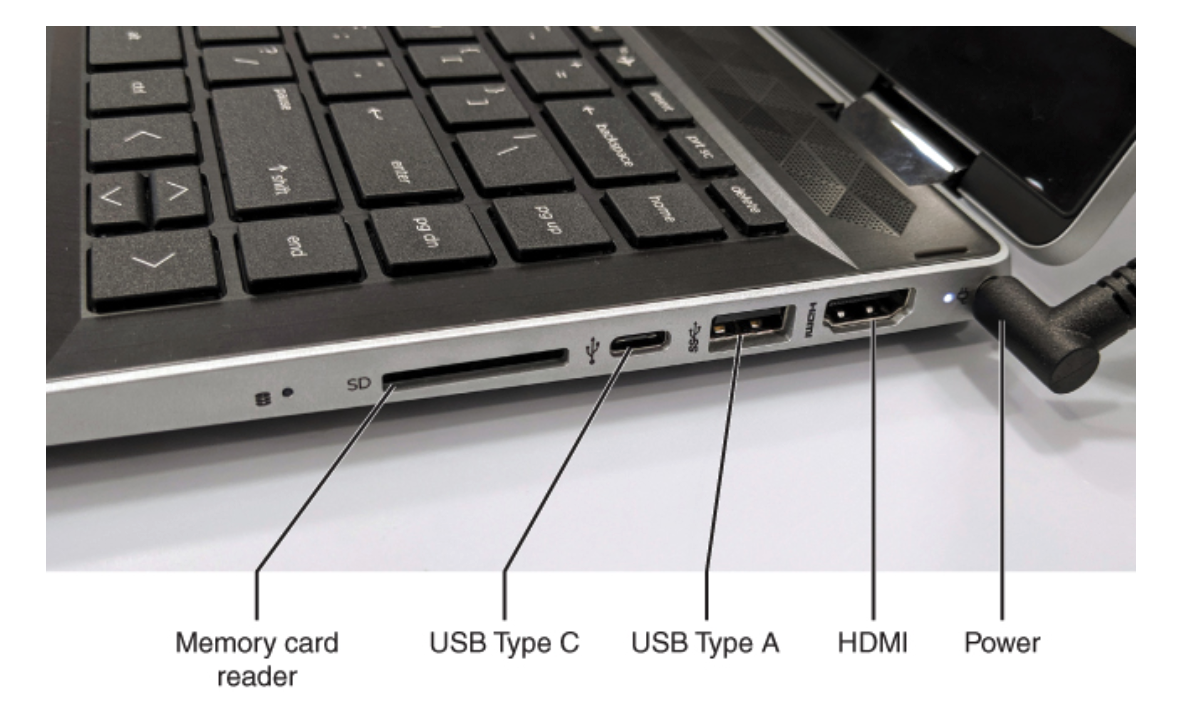
Convertible laptop
2-in-1 PC or 2-in-1 tablet

All-in-One Desktop PC


Traditional Desktop PC
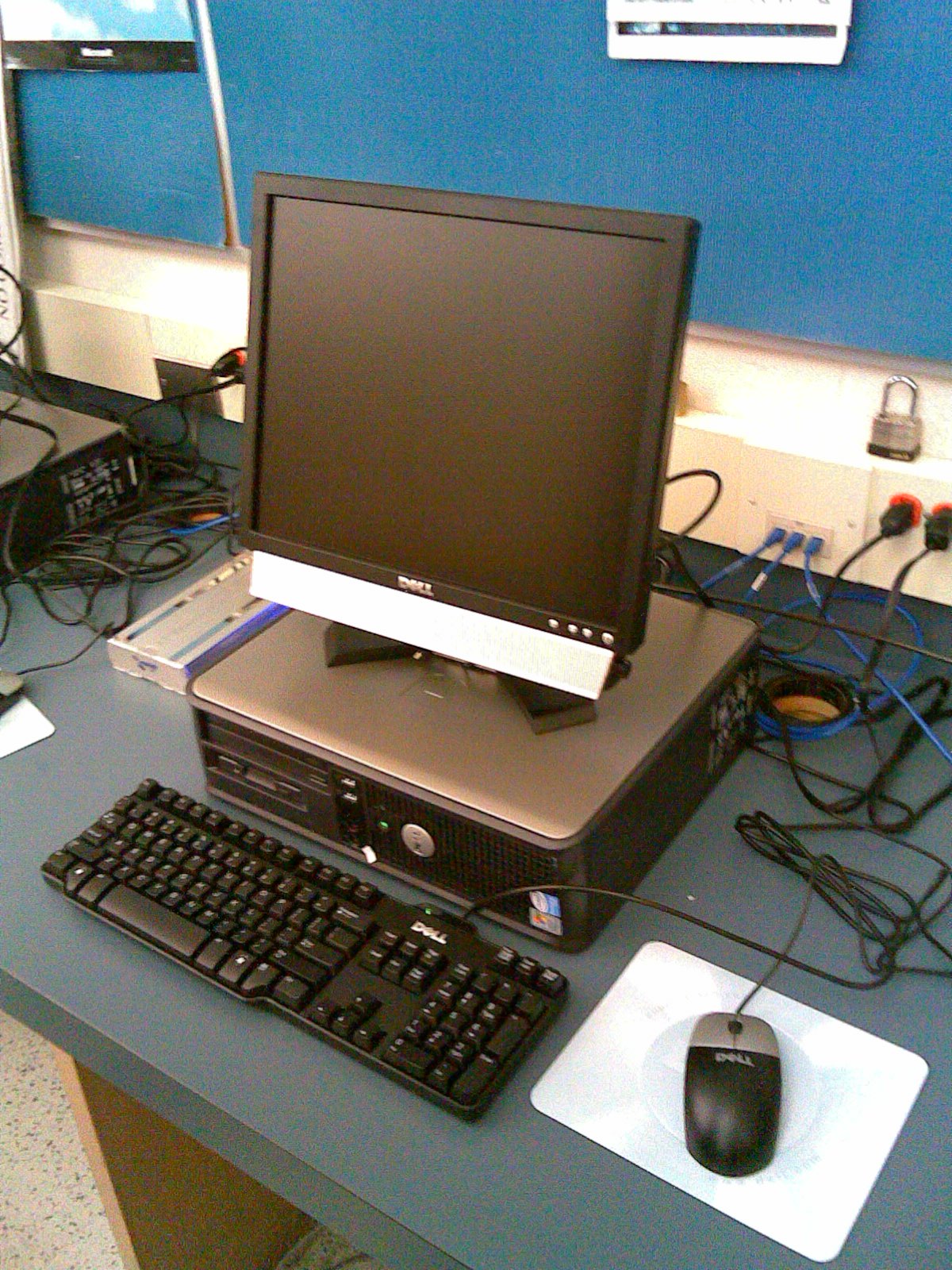

USING

Know Windows 11
Starting and Logging in to Windows
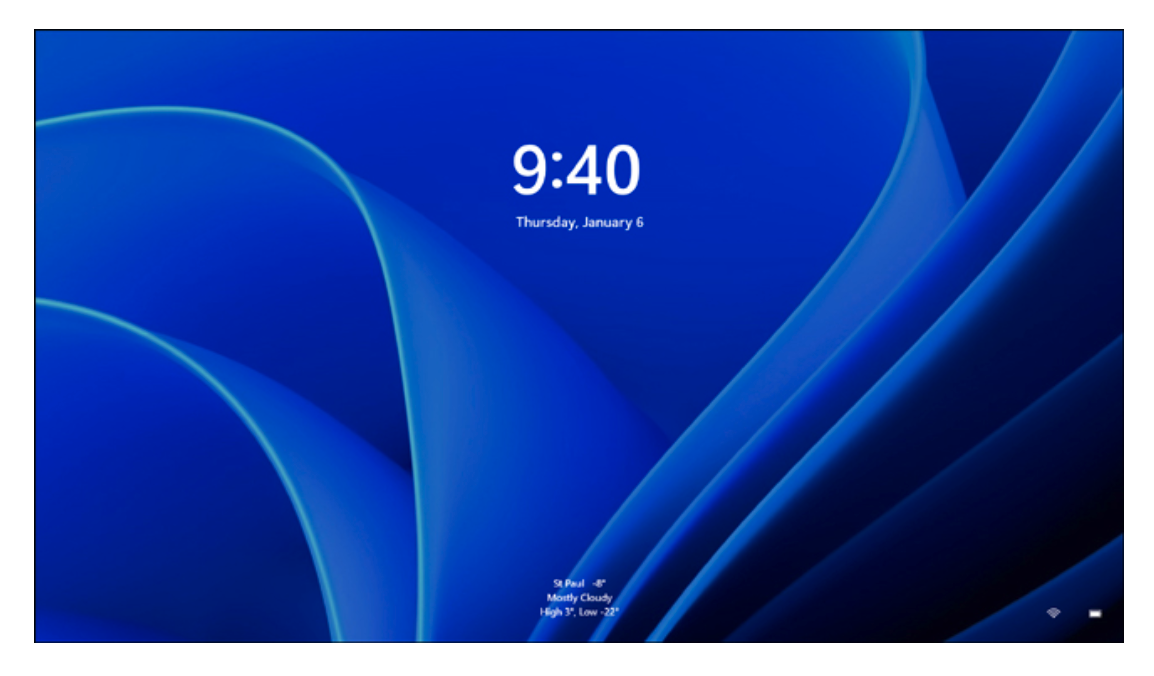
Know Windows 11
Starting and Logging in to Windows
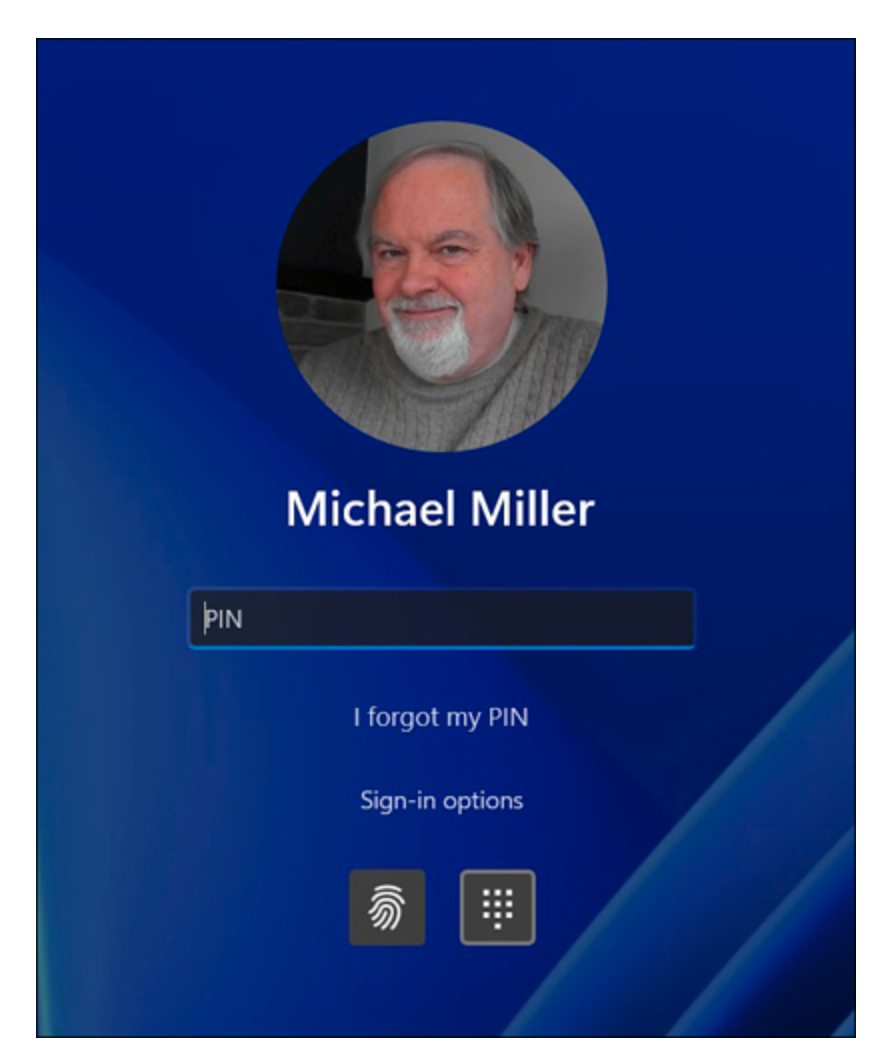
Exploring the Windows Desktop
The desktop is your home base in Windows. It is where all your programs and documents reside.

Learning Basic Operations
You need to master a few simple operations with your mouse or touchpad, such as
Pointing and clicking,
Dragging and dropping, and
Right-clicking
Mouse over/hovering
Moving and Resizing Windows

Warning
If you try to close a window that contains a document you haven’t saved, you’re prompted to save the changes to the document. Because you probably don’t want to lose any of your work, click Yes to save the document, and then close the program.
Scrolling Through a Window
Tip
On touch pad use two fingers to move the page up or down
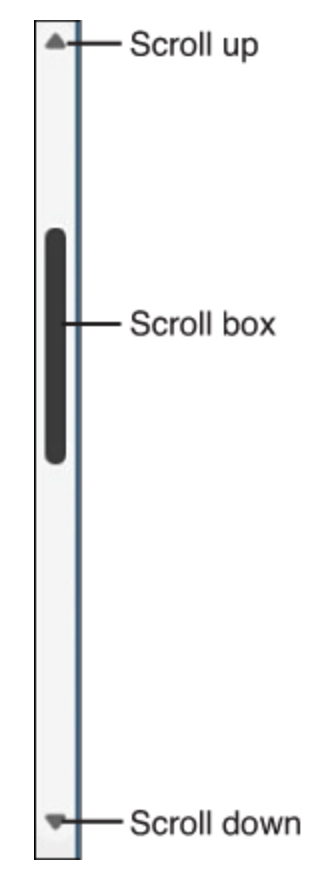
Peeking at the Desktop
To minimize all open windows so that you can see the open desktop.
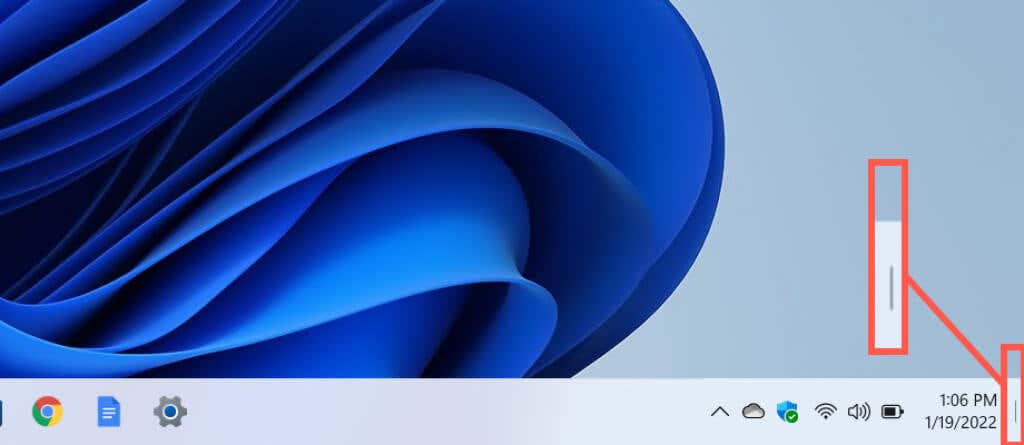
Using the Start Menu
All the software programs and utilities on your computer are accessed via the Start menu.
Click the
Startbutton, located on the left side of the centered taskbar.
Navigating the Start Menu
Access all the programs on your system from the Start menu.
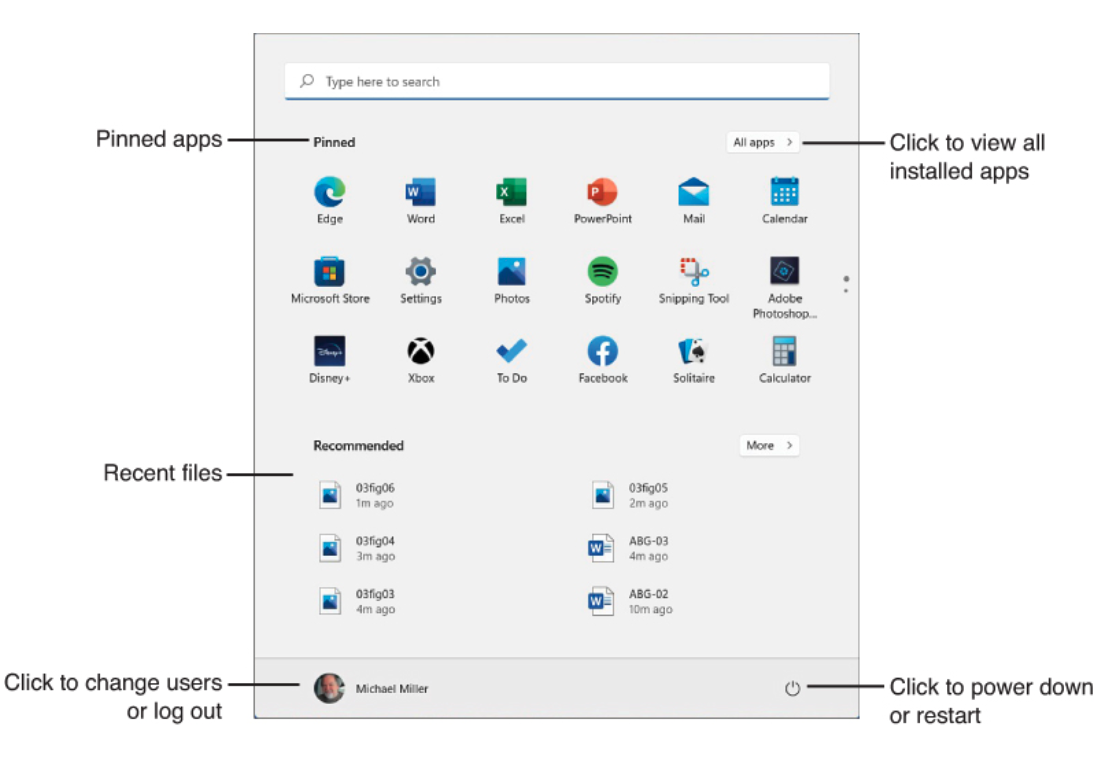
Launching a Program
To start any particular software program.
Click or tap the Start button to display the Start menu
Click or tap the program’s name or icon.
Using the Taskbar
The little strip at the bottom of the Windows desktop is called the
taskbar.
To open our favorite applications and documents
To switch between open windows
To add icons for your favorite programs to the taskbar.
Using Jump Lists
To display an icon’s Jump List, right-click the icon.
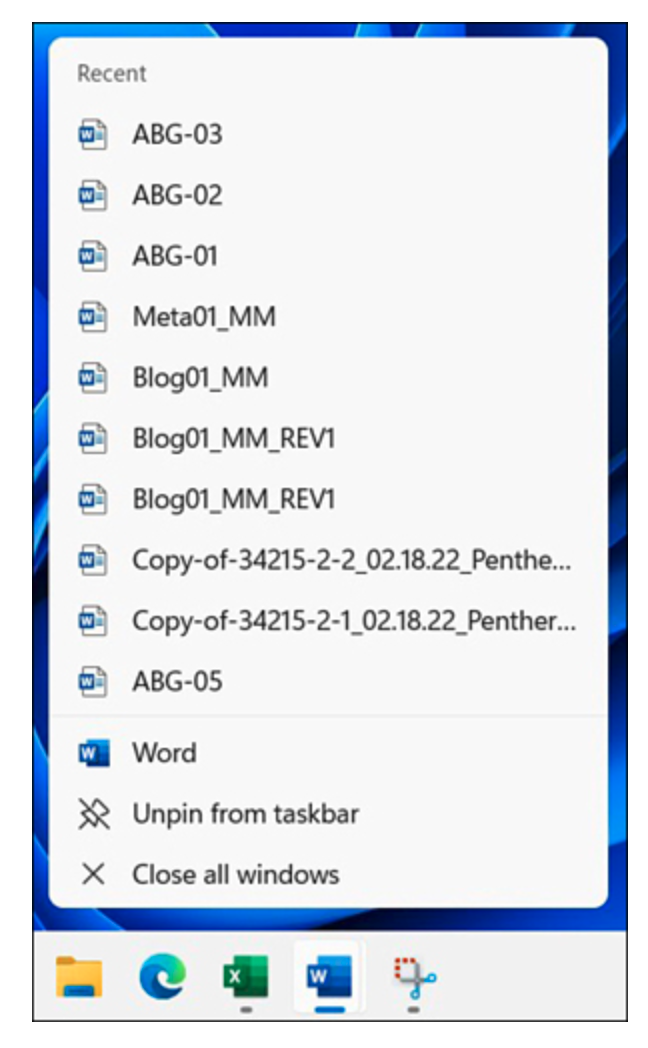
Most Jump Lists contain the following items:
The most recent documents opened in this application
A link to open a new instance of this application
An option to unpin this item from the taskbar (for shortcut icons)
An option to close all windows (for open-window icons)
Switching Between Programs
Hold down the
Altkey and then press theTabkey repeatedly until the application window you want is selected.When you are at the window you want, release the
Altkey.
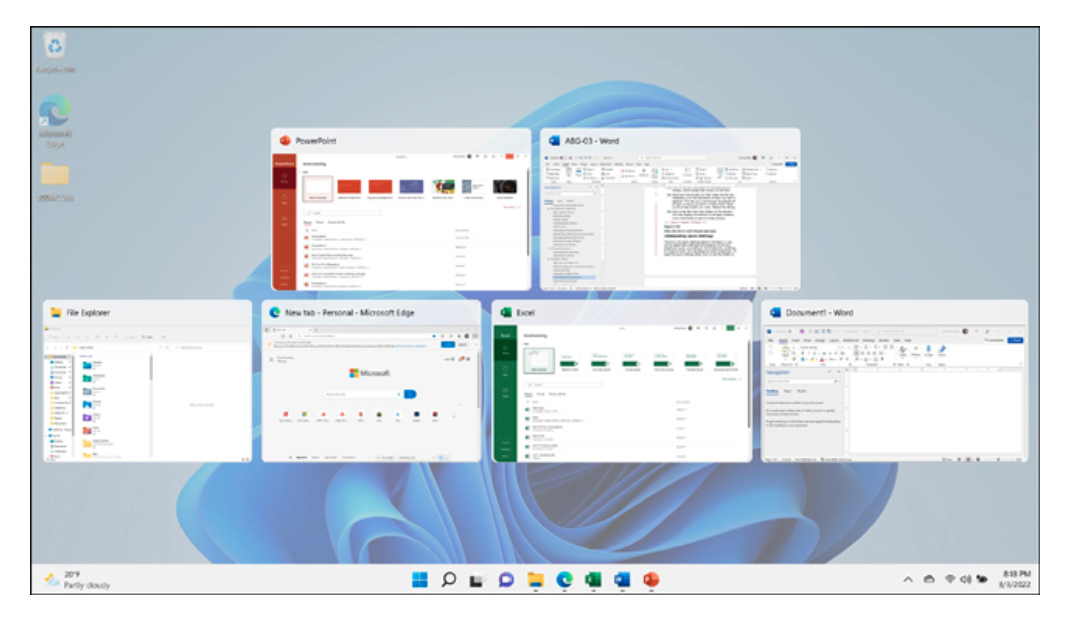
Adjusting Quick Settings
Click or tap one of the icons the middle of the notifications area on the taskbar.
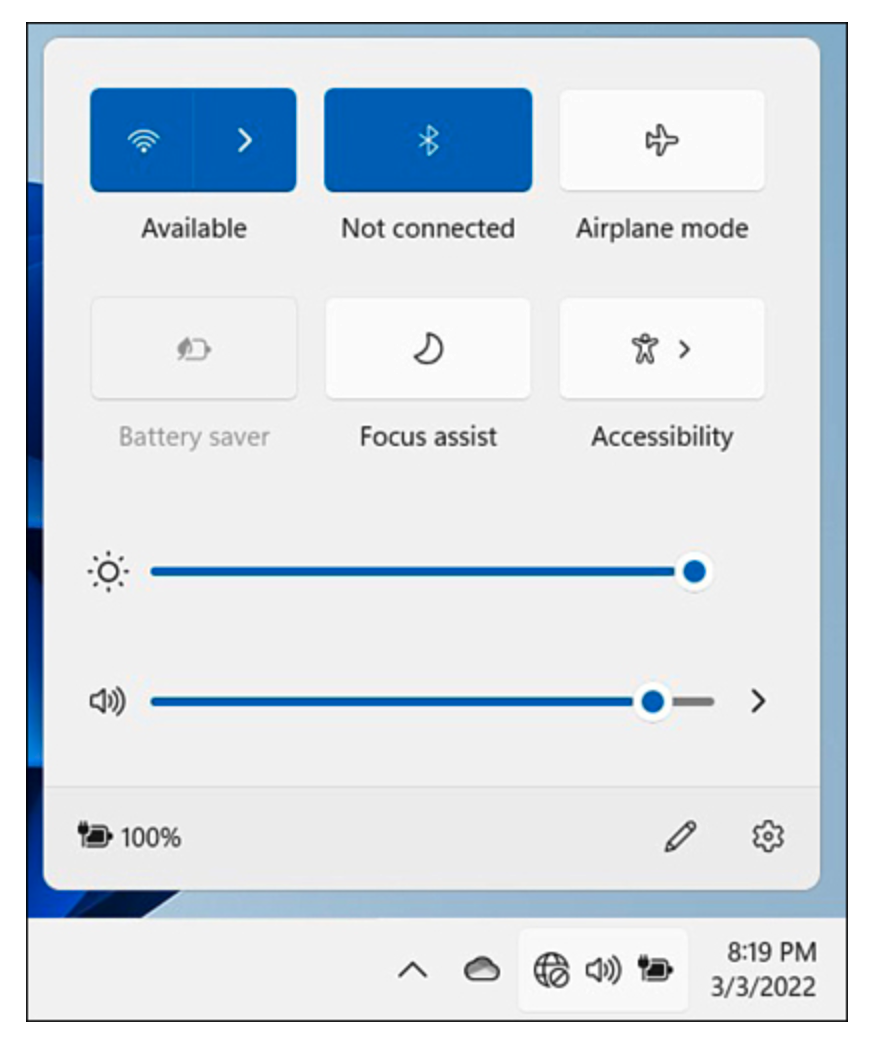
Viewing Notifications

Shutting Down Windows & PC
You always want to turn off things through the official Windows procedure.

Important Windows Shortcuts
Some shortcuts you can use to speed up important Windows operations.
Operation |
Keyboard |
Mouse/Touchpad |
|---|---|---|
| Close currently running app or window | Alt + F4 | Click the X button in top-right corner of window. |
| Display context-sensitive options menu | Application (menu) key | Right-click. |
| Display Notifications panel | Windows + N | Click date and time on the taskbar. |
| Display Quick Settings panel | Windows + A | Click the left side of the notifications area on the taskbar. |
| Display Start menu | Windows key | Click the Start button |
| Lock computer | Windows + L | Click the Start button, click you username, and then click Lock. |
| Move an item to a new location | N/A | Click and drag, and then release. |
| Open a program or document | Enter | Click (sometimes double-click) |
| Open Windows Help | Windows + F1 | N/A |
| Scroll down | Pg Dn or down arrow | Click and drag the scrollbar or click the scroll arrows; use the mouse scroll wheel. |
| Scroll left | Pg Up or left arrow | Click and drag the scrollbar or click the arrows; use the mouse scroll wheel. |
| Scroll right | Pg Dn or right arrow | Click and drag the scrollbar or click the scroll arrows; use the mouse scroll wheel. |
| Scroll up | Pg Up or up arrow | Click and drag the scrollbar or click the scroll arrows; use the mouse scroll wheel. |
| Search your computer | Windows + S | Click within the Search box on the taskbar. |
| Shut down Windows | Alt + F4 | Click the Start button, click Power, and then click Shut Down. |
| View or switch to Alt+Tab other open apps | Alt+Tab | N/A |
| View or switch to other virtual desktops | Windows + Tab | Click Task View button on taskbar. |
Files,
Folders, and
Online Storage
Working with Files, Folders, & Online Storage
Managing the data stored on your computer is vital.
After you save a file, you might need to copy it to another computer, move it to a new location on your hard drive, rename it, or even delete it.
You have to know how to perform all these operations—which means learning how to work with files, folders, and disks in Windows.
Understanding Files and Folders
All the information on your computer is stored in
files.A file is nothing more than a collection of digital data.
The contents of a file can be a document (such as a Word memo or an Excel spreadsheet), a digital photo or music track, or the executable code for a software program.
Understanding Files and Folders
Every file has a name.
-
Each filename must consist of two parts, separated by a period (
.)- the
name(to the left of the period) and - the
extension(to the right of the period)
- the
A filename can consist of letters, numbers, spaces, and characters and looks something like this:
filename.ext
Understanding Files and Folders
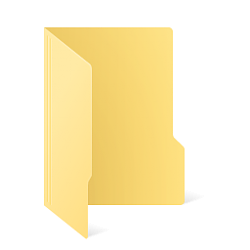
Windows stores files in
folders.A folder is like a parent file; each folder can contain both files and additional folders.
The exact location of a file is called its
pathand contains all the folders leading to the file.
Understanding Files and Folders
For example, a file named ajay_cv.doc that exists in the system folder, which is itself contained in the windows folder on your C: drive, has a path that looks like this: C:\users\yourname\documents\ajay_cv.doc.
Tip
- By default, Windows hides the extensions when it displays filenames. To display extensions in Windows 11, select View, Show, File Name Extensions.
Using File Explorer
In Windows 11, all the items stored on your computer – including programs, documents, and configuring settings – are accessible from
File Explorer.You use File Explorer to find, copy, delete, and launch programs and documents.
Launching File Explorer
You can launch File Explorer in one of four ways:
From the taskbar, click or tap the File Explorer icon.
Click or tap the
Startbutton to display the Start menu; then click or tap theFile Explorericon.Right-click the
Startmenu to display the Options menu; then click or tap File Explorer.Press
Windows+Eon your computer keyboard.
File Explorer Window
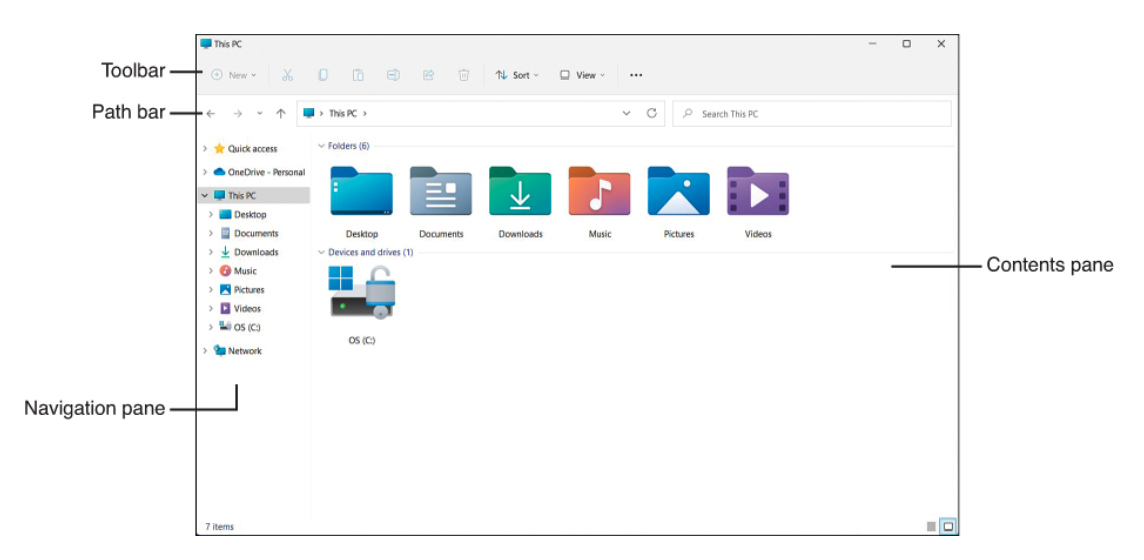
Navigation Pane
Quick Access:your most recent used folders, as well as several folders that are “pinned” to this section: Desktop, Downloads, Documents, Pictures, and Videos.OneDrivesection: it lets your folders stored on Microsoft’s OneDrive Internet-based storage service.Below
This PCsection provides access to all the disk drives and devices connected to your computer.Networksection: to access all your networked computers.

Display File Contents & Details
To display the Details or the Preview pane, select View and then select either Details Pane or Preview Pane.
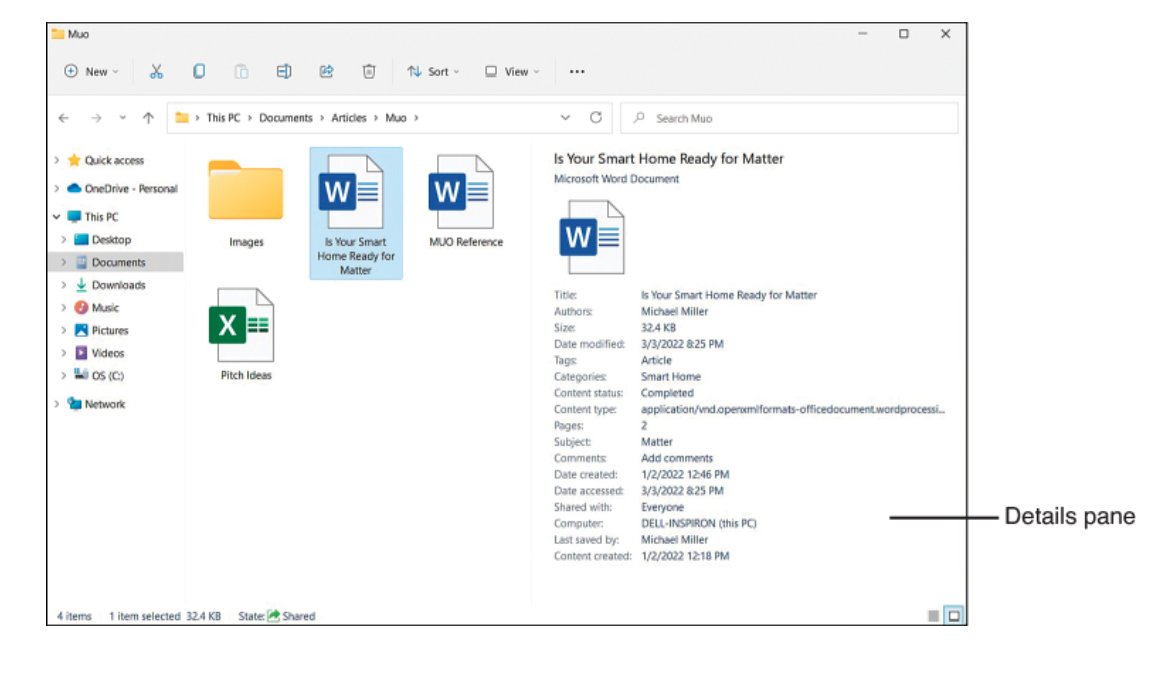
Navigate the Folders on Your PC
A subfolder is a folder that is contained within another folder. Multiple subfolders can be nested in this fashion.
To view the contents of a disk or folder,
double-clickor double-tap the selected item.To move back to the disk or folder previously selected, click the Back button (left arrow) in the Path bar beneath the toolbar.
To choose from the history of disks and folders previously viewed, click the down arrow in the Address box in the Path bar and select a disk or folder.
Viewing Files and Folders
To change the file view, click or tap View in the toolbar.
Tip
The Details view is better if you’re looking for files by date or size.

Sorting Files and Folders
To do this, click or tap
Sortin the toolbar and then selectGroup By.-
You can then choose to sort by a variety of criteria, including
- Name (if you want your file alphabetical),
- Date Modified,
- Type (to see all similar files together),
- Size,
- Date Created,
- Folder Path,
- Authors,
- Categories, or
- Title.
Grouping Files and Folders
You can also configure File Explorer to group the files in your folder, which can make it easier to identify particular files.
For example, if you sort your files by time and date modified, they’re grouped by date (Today, Yesterday, Last Week, and so on).
If you sort your files by type, they’re grouped by file extension, and so on.
Searching for Files
To use the Instant Search feature, enter one or more keywords into the
Search boxin the Path bar. Matching files display as you type; you can select one of these or finish entering the keyword(s) and then press Enter.File Explorer displays a list of items that match your search criteria. Double-click or double-tap any icon to open that file.
File and Folder Operations
Use the functions availabe on the File Explorer toolbar.

Creating New Folders
The more files you create, the harder it is to organize and find things on your hard disk.
To create a new folder, follow these steps:
Navigate to the drive or folder where you want to place the new folder.
On the toolbar, select New, Folder.
A new, empty folder appears within the File Explorer window, with the filename New Folder highlighted.
Type a name for your folder (which overwrites the New Folder name), and press Enter.
Naming New Folders
Warning
Folder and filenames can include up to 255 characters—including many special characters. Some special characters, however, are “illegal,” meaning that you can’t use them in folder or filenames.
Illegal charactersinclude the following:\ / : * ? “ < > |.The one part of the filename
you should never change is the extension—the part that comes after the “dot.” That’s because Windows and other software programs recognize different types of program files and documents by their extension. This is why, by default, Windows hides these file extensions—so you can’t change them by mistake.
Renaming Files and Folders
When you create a new file or folder, it helps to give it a name that somehow describes its contents.
To rename a file (or folder), follow these steps:
Click or tap the file or folder you want to rename.
Click or tap the Rename button on the toolbar.
Type a new name for your file or folder (which overwrites the current name), and press Enter.
Copying Files
Copying a file lets you re-create that file in a different location, either on your computer’s hard drive or on some sort of external media. Here’s how to do it:
Select the item you want to copy.
Click or tap the Copy button on the toolbar.
Navigate to the folder where you want to copy the item.
Click or tap the Paste button on the toolbar.
Moving (Cut and Paste) Files
Moving a file (or folder) is different from copying it. Moving cuts the item from one location and pastes it into a new location. Copying leaves the item in its original location and creates a copy of the item elsewhere.
In other words, when you copy something, you end up with two of it. When you move something, you have only the one instance.
To move a file, follow these steps:
Select the item you want to move.
Click or tap the Cut button on the toolbar.
Navigate to the new location where you want to move the item.
Click or tap the Paste button.
Deleting Files
- Too many files eat up too much hard disk space—which is a bad thing because you have only so much disk space. Deleting a file is as easy as following these simple steps:
Select the file or files you want to delete. (To select multiple files, hold down the Ctrl key while clicking or tapping.)
Click or tap the Delete button on the toolbar.
This simple operation sends the file to the Windows Recycle Bin
Tip
- You can also delete a file by selecting it and then pressing the Delete key on your computer keyboard.
Working with the Recycle Bin
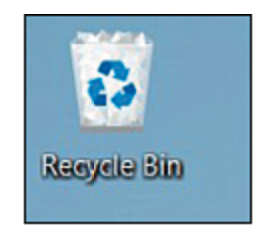
Recycle Bin is a special folder on your hard disk that temporarily stores all deleted items.
How to “undelete” or restore a file from the Recycle Bin?
Emptying the Recycle Bin

Double-click or double-tap the Recycle Bin icon on your desktop to open the Recycle Bin folder.
Click or tap the Empty the Recycle Bin button on the toolbar.
When the confirmation dialog box appears, click or tap Yes to completely erase the files; click or tap No to continue storing the files in the Recycle Bin.
Work with Compressed Folders
Compressed folders(sometimes called zip files) take big files and compress their size, which makes them easier to copy or move

Compressing a File
![]()
Select the file(s) you want to compress. (Hold down the Ctrl button as you select multiple files.)
On the toolbar, select More (three dots), Compress to ZIP file.
Compressed folder is distinguished by a little zipper on the folder icon.
Extracting Files from a Compressed Folder
The process of decompressing a file is actually an extraction process.
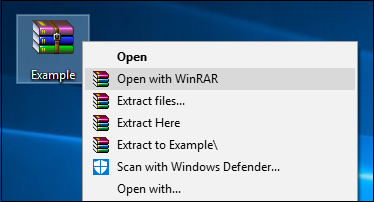
Copy Files to Another Computer

The most popular type of portable drive today is the USB drive (sometimes called a pen drive or flash drive or thumb drive).
How to use USB:
Insert the device into an open USB port on your computer.
After you insert it, the drive appears as a new drive in the
This PCsection of the File Explorer navigation pane.Double-click or double-tap the USB drive icon to view the contents of the drive.
Then copy and paste files from your hard drive to the USB drive and vice versa.
When you finish copying files, just remove the USB device (Eject safely).
Copying Files via Email
You can send any file as an email
attachment; a file is literally attached to an email message.When the message is sent, the recipient can open or save the attached file when reading the message.
Work with Cloud-Based Storage
Microsoft offers online storage for all your documents and data, via its
OneDriveservice. When you store your files on OneDrive, you can access them via any computer or mobile device connected to the Internet.This type of online file storage is called
cloud storagebecause the files are stored on the “cloud” of computers on the internet.It’s all up to you, and all available to any person with a web browser, password permission and an Internet connection.
Access OneDrive from File Explorer
From within File Explorer, click or tap OneDrive in the navigation pane. This displays all your OneDrive files and folders.

Using Microsoft OneDrive
From within any web browser, go to onedrive.live.com and either sign into an existing account or sign up for a new one.

Note
- Microsoft gives you 5GB of storage in your free OneDrive account
Sync Files on Your PC to OneDrive
To synchronize a file in this fashion, it must be stored in a special OneDrive folder. Then, whenever you connect to the Internet, any changes you make to that file are automatically made to the version of that file stored on OneDrive.
Note
Microsoft OneDrive is just one of many cloud storage services you can use to store and share your files online. Other popular services include Apple iCloud (www.icloud.com), Box (www.box.com), Dropbox (www.dropbox.com), and Google Drive (www.google.com/drive/). All these services work in a similar fashion. Check out the various services before you commit—especially for a paid plan.
Personalizing
Windows
Personalizing the Windows
Reflect your personality
Change color scheme
Change desktop background
“light” and “dark” modes
Change desktop background
Default picture | Your favorite picture | Any solid color
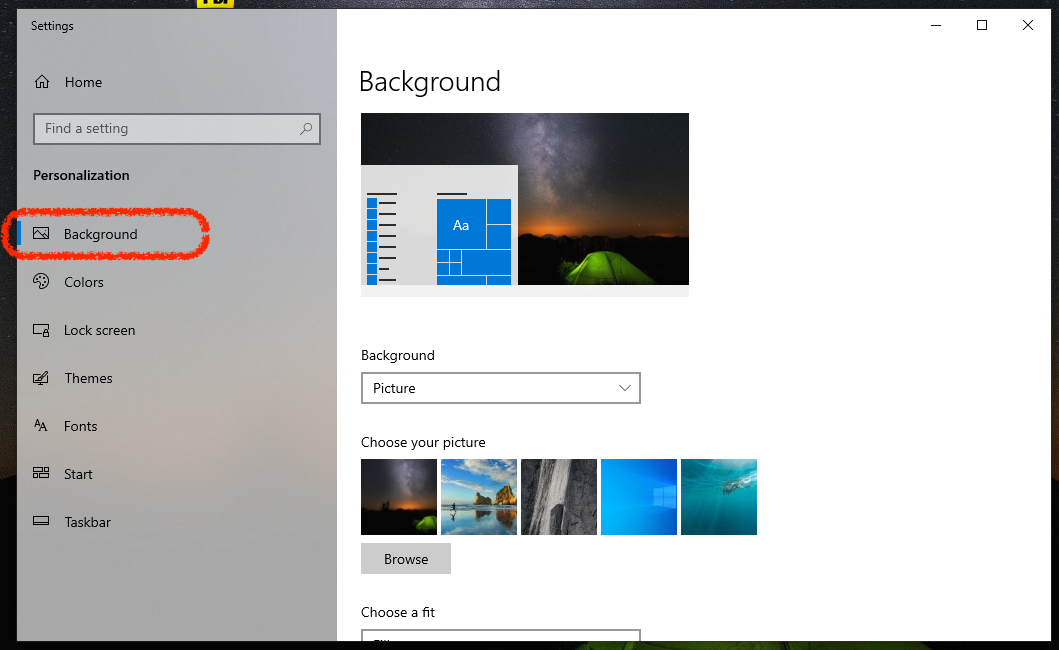
Light or dark mode

Choosing an accent color
Color for window borders and title bars
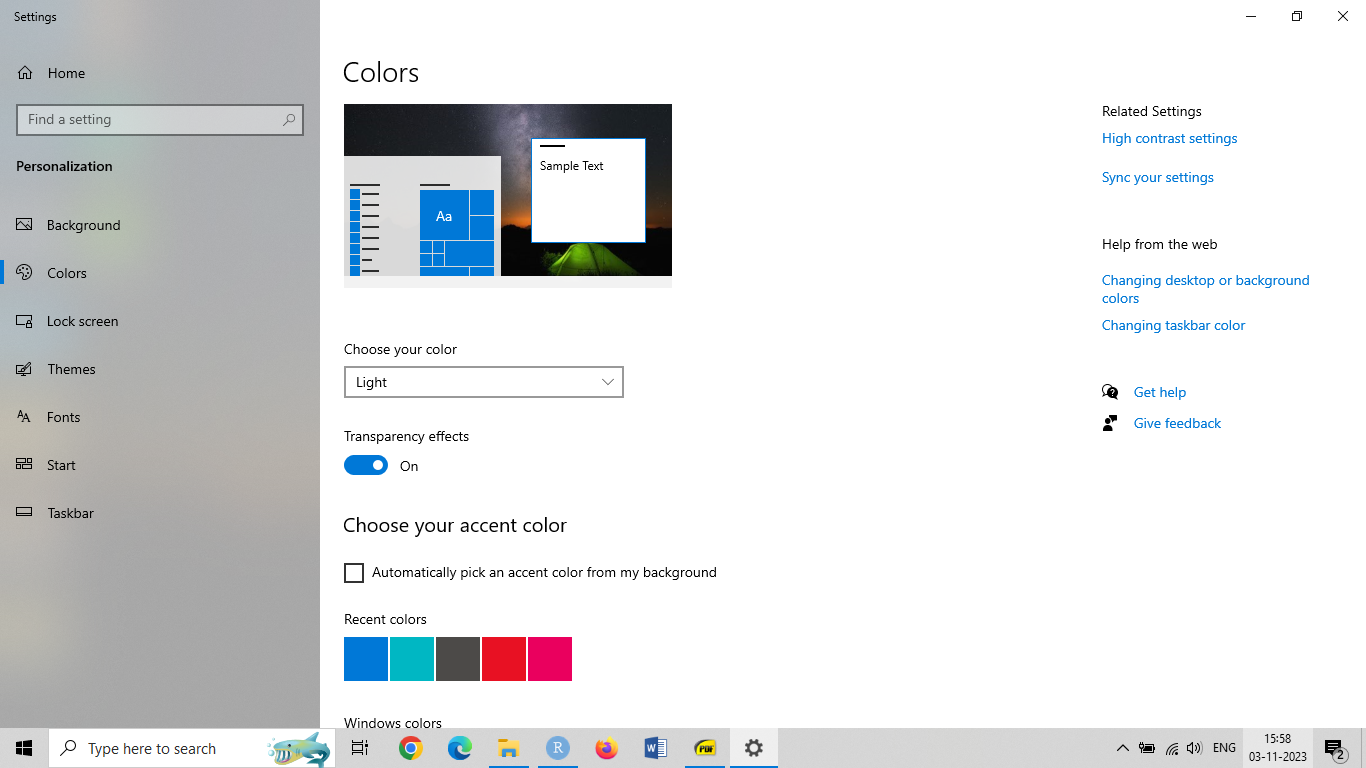
Chossing a Windows theme

Customize the Start menu

Customize the Taskbar
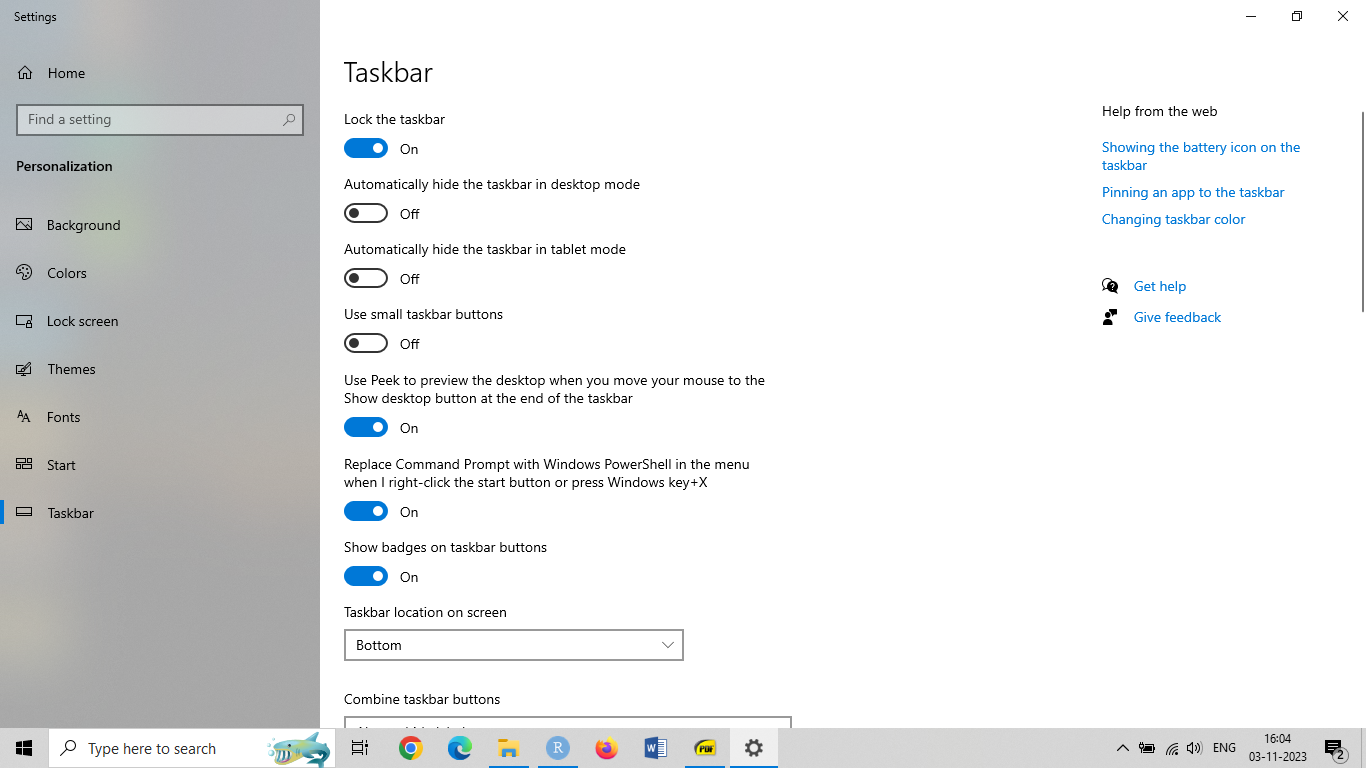
Personalize Lock Screen
Change background | Display slideshow
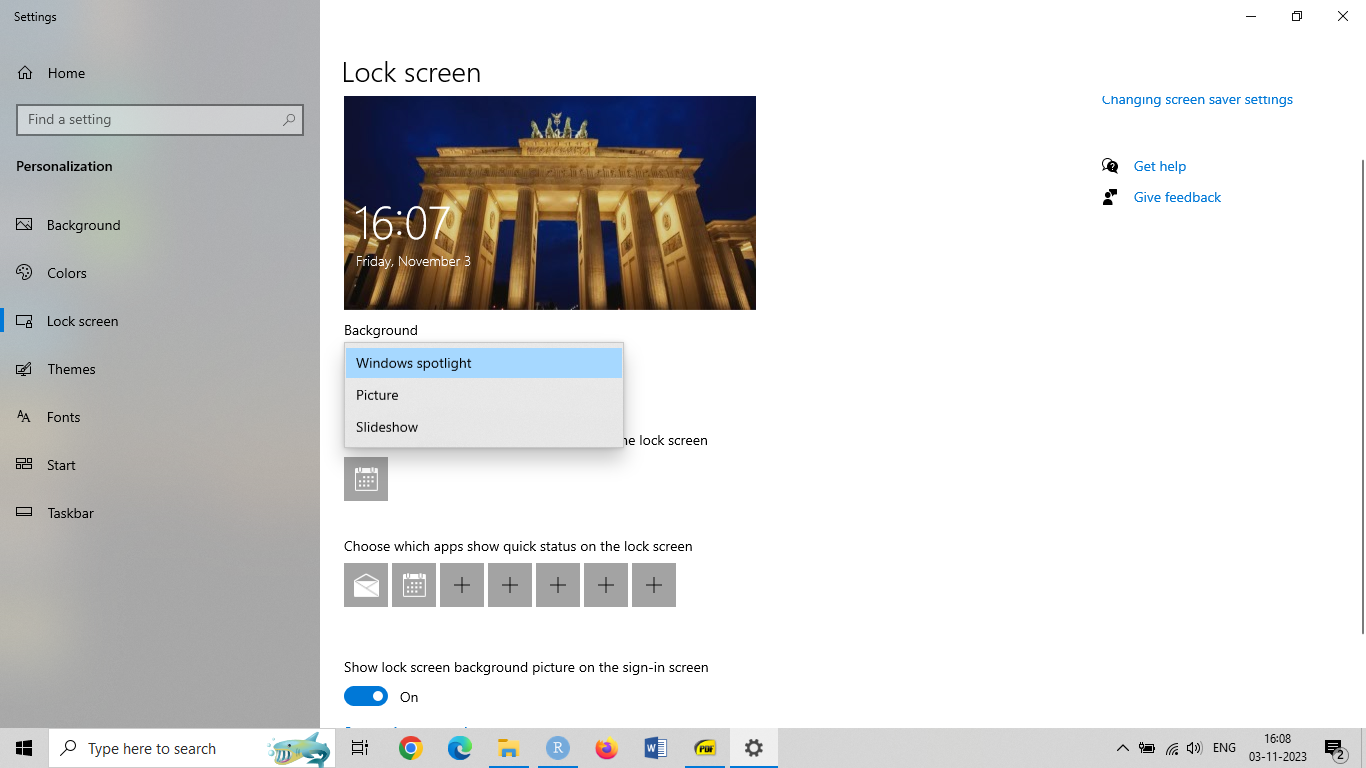
Lockscreen
Change Account Picture
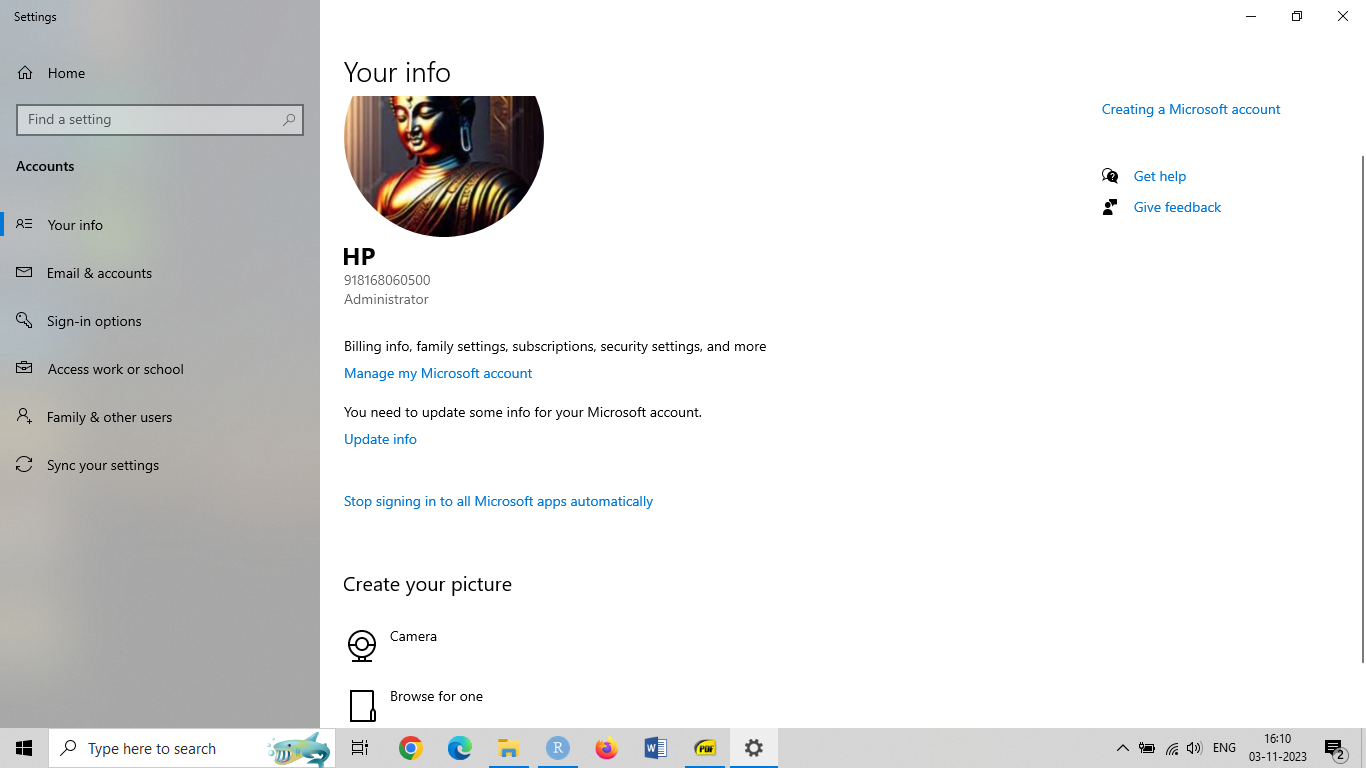
Additional User Accounts
Create new user account | Switching Users | Signing out
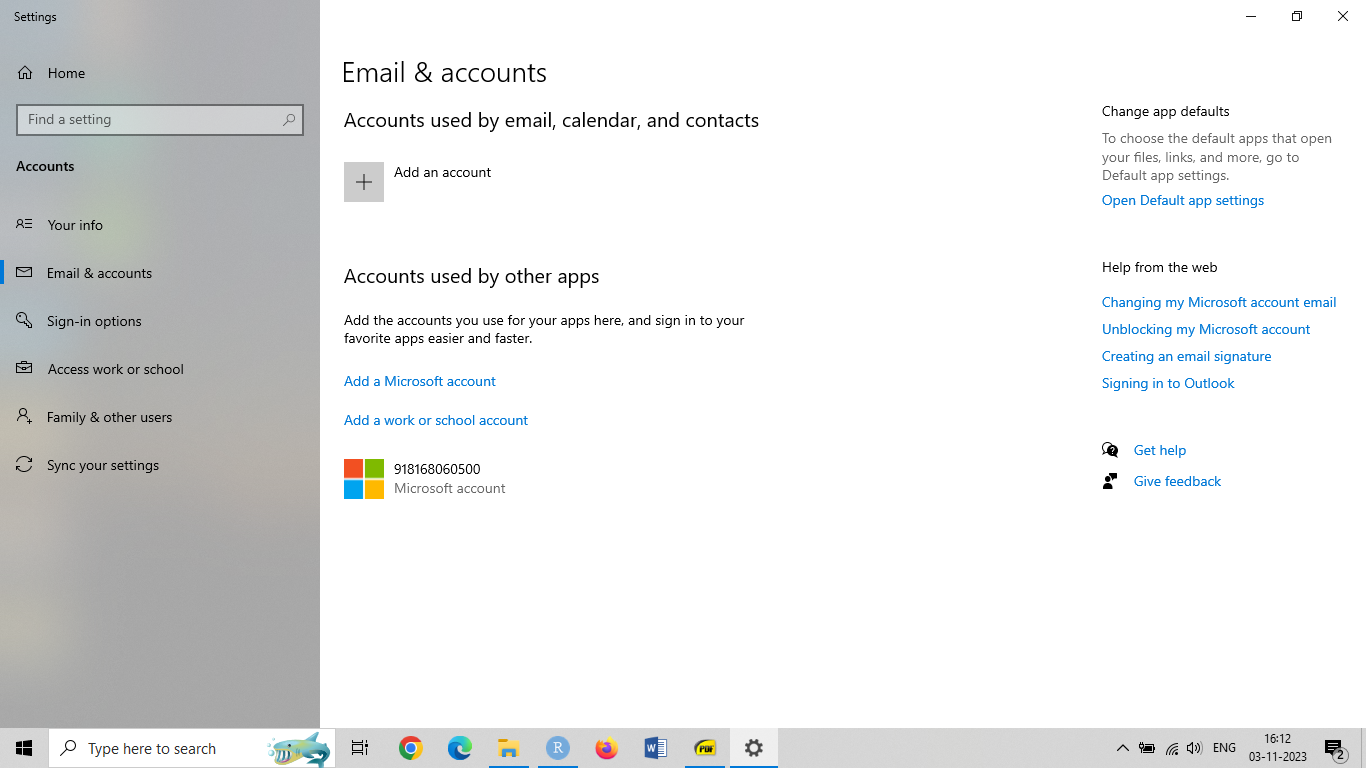
Windows Settings
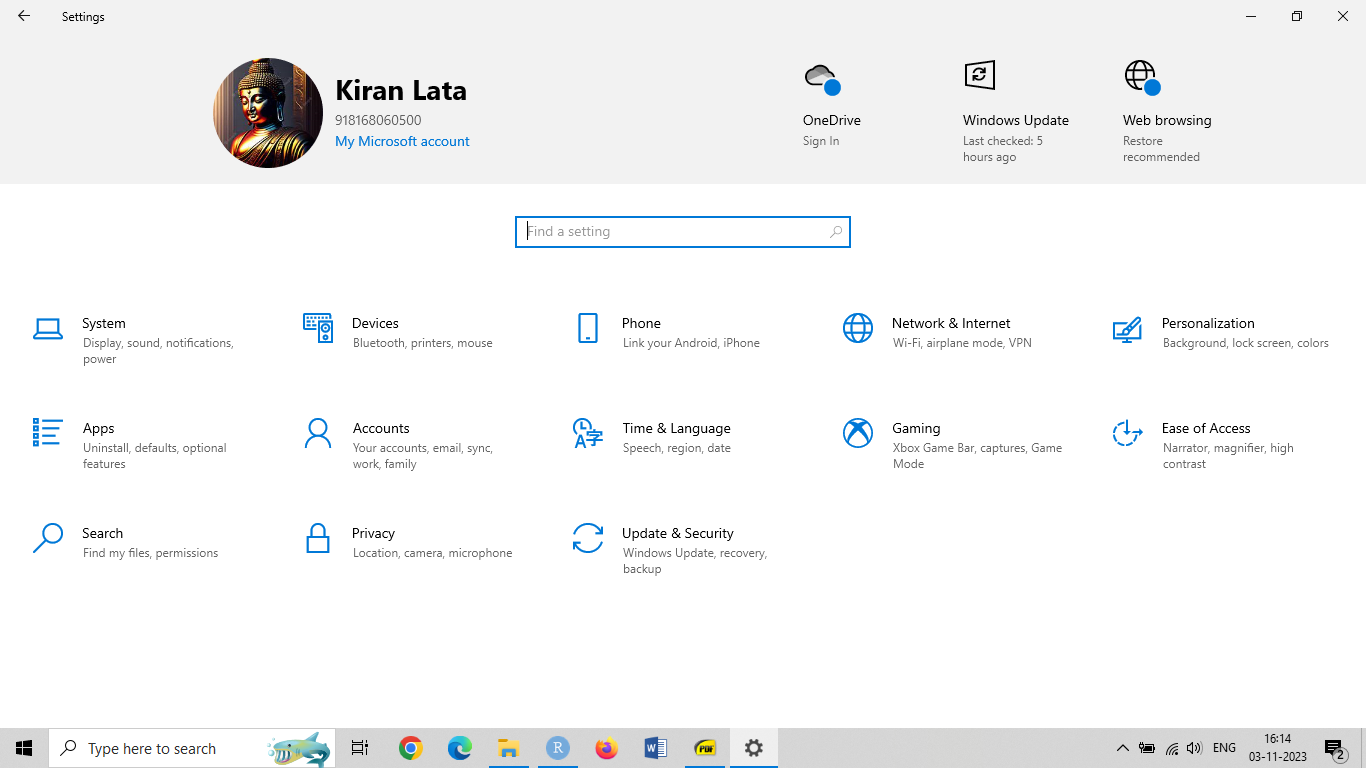
System Settings

Setting Up
the Rest of
Your System
Most popular peripherals
Game pad or other game controller
Hard disk drive
Keyboard
Memory card reader
Monitor
Mouse
Printer
Solid-state drive
Sound card
Speakers
USB memory device
Video card
Webcam
Wireless network adapter
Wireless router
Understanding Ports
A port is simply an interface between your PC and another device either internally or externally.

Understanding USB
The most common external connector today is the Universal Serival Bus.
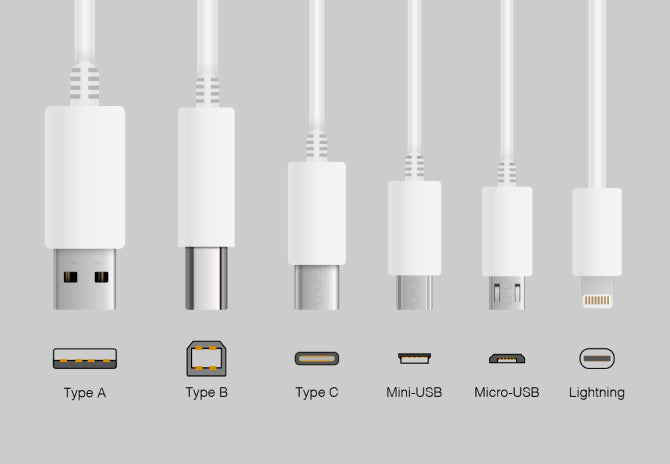
Connect & use a printer
Device Driver: It is a small software program that enables your PC to communicate with and control a specific device.

Types of printers
Inkjet printers
Shoot ink jets on the paper
Slow and less costly
Ideal for home use
Laser pritners
Like photo-copy
Fast but costly
Ideal for commercial purpose
Ways to connect printers
Connecting a printer via USB
Connecting a wireless printer to your computer
Sharing a network printer
Printing to your system’s printer
Connect protable devices
Gadgets that you use on their own but plug into your PC to share files – smartphones, digital cameras, and USB memory devices.
You can transfer files either from your PC to the portable device, or vice versa.
Connect your PC to your living room TV
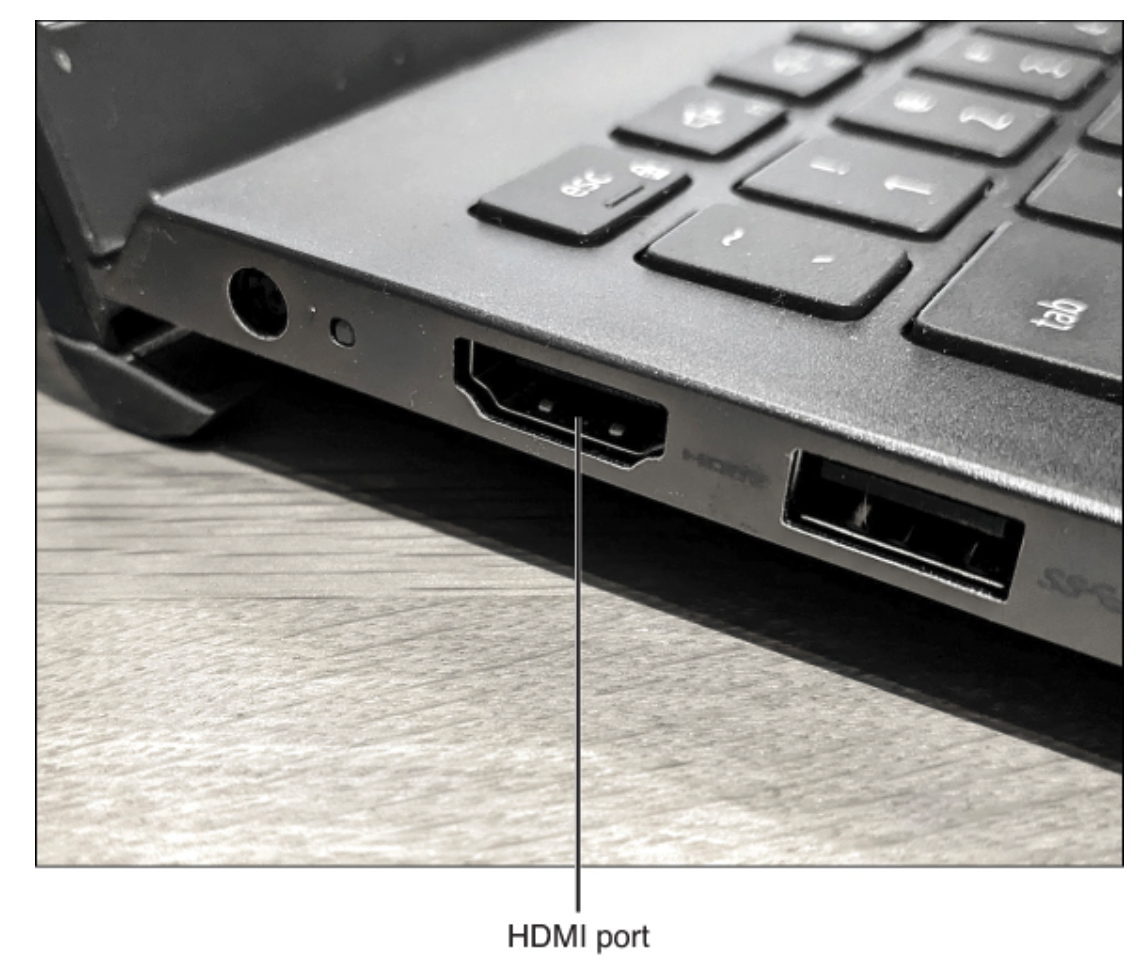
Connect via HDMI (High-definition multimedia interface)
-
Wirelessly mirroring your computer screen
PC and TV on same WiFi
Miracast technology
Understand external Storage

External hard disk and SSD drives let you add extra storage capacity to your system—up to 16TB extra.
You can use an external drive to back up valuable data from your main internal drive.
Also available are online backup services, which back up your data over the Internet.
Computer network
To connect two or more computers or to share an Interent connection in your home.
Networks work
Wired network: It is faster and more secure.Wireless network: It is more convenient (no wires).
Wired networks
A wired network is the kind that requires you to run a bunch of cables from each PC to a central hub or router.
How quickly data is transferred across a network is measured in megabits per second, or
Mbps. The bigger the Mbps number, the faster the network—and faster is always better than slower.
Wireless networks
It uses radio frequency (RF) signals to connect to one computer to another.
It is known as Wi-Fi.
Wireless network
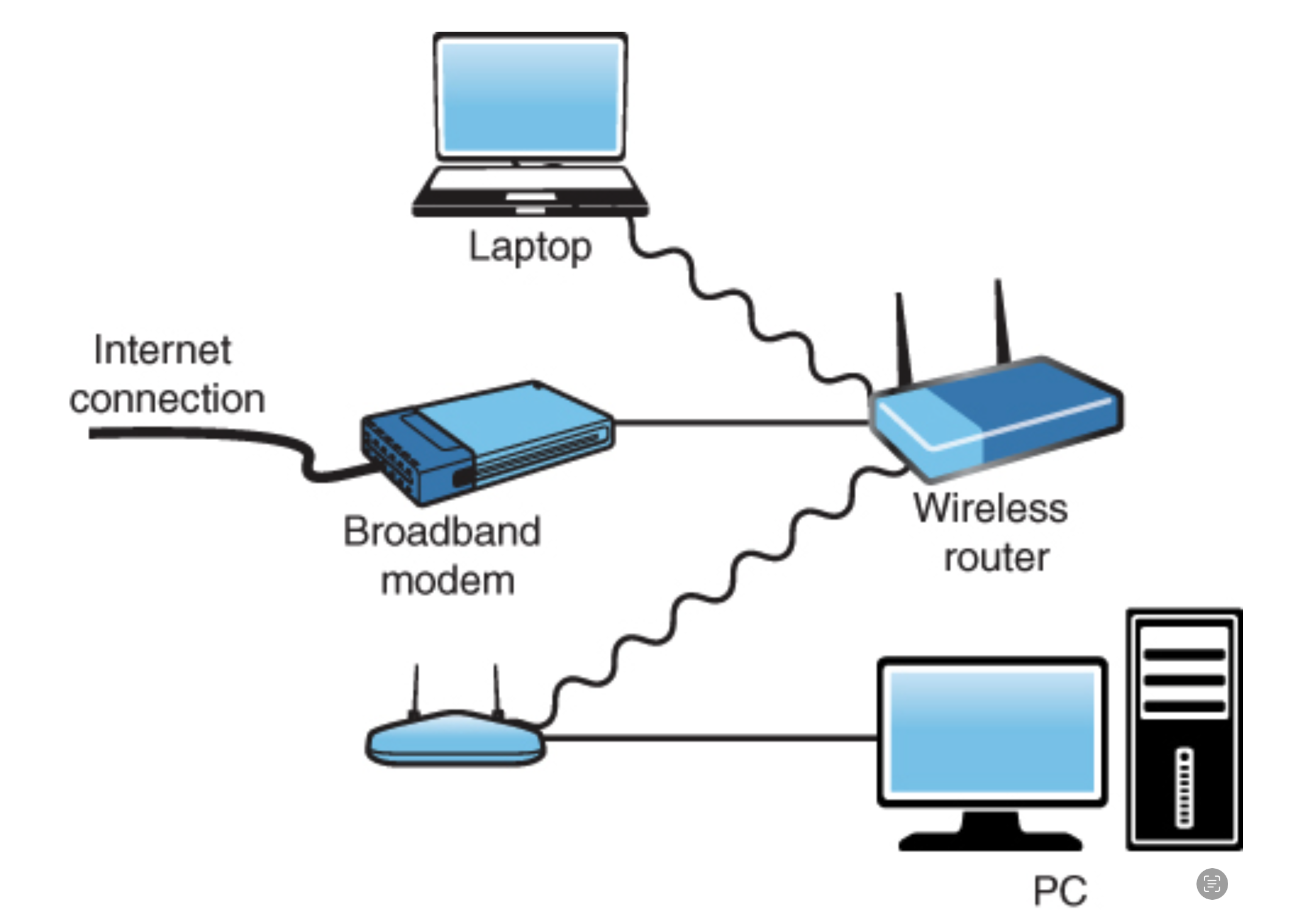
Internet at Home
ISP (Internet Service Provider): a company that provides your home with a connection to the Internet.-
Broadbandinternet connection:- Cable
- Digital subscriber (DSL)
- Fiber optic
- Satellite
Modem: A little black box that connects directly to your computer or to a wireless router.
Connect to a Public Wi-Fi
Hotspot: A hotspot is a public place that offers wireless access to the Internet using Wi-Fi technology. Some hotspots are free for all to access; others require some sort of payment.

Browsing and searching the Web
You surf the Web with a web browser.
-
Web Browser- Home page
- Search engine like Google, Duck Duck Go etc
- Bookmark
- Add-ons
- Settings & passwords
- Tab and pinned tabs
- Start from where you end the browser
- mode and themes
- ad blocker
Sending and Receiving Email
Email: short for electronic mail
-
Each email address is unique and has three parts:
- The user’s name
- The
@sign - The user’s domain name
-
Two ways to send email
- POP: Post Office Protocol/Internet Message Access Protocol - they require a separate email program.
- Web based email: send and receive email from any web browser.
Learn about email
Inbox
Compose
Trash
Draft
Contact
Signature
CC or BCC
Install and use application
Download software/application from the internet
Install the app from the folder where the app file is downloaded.
Always install app as an administrator
![]()
GOOGLE DRIVE
Google Drive
It is a file storage and synchronization service developed by Google.
It was launched on 24 April, 2012.
It allows users to store files in the cloud, synchronize files across devices, and share files.
Google Drive: File Types
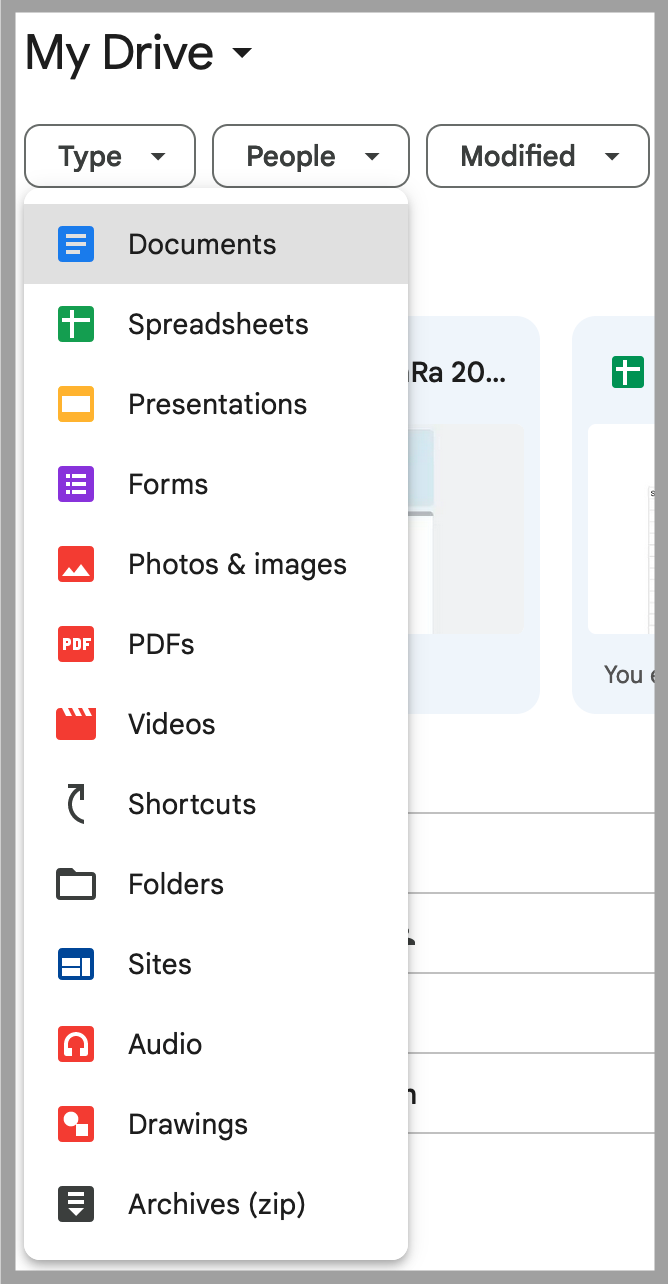
Google Drive: Options
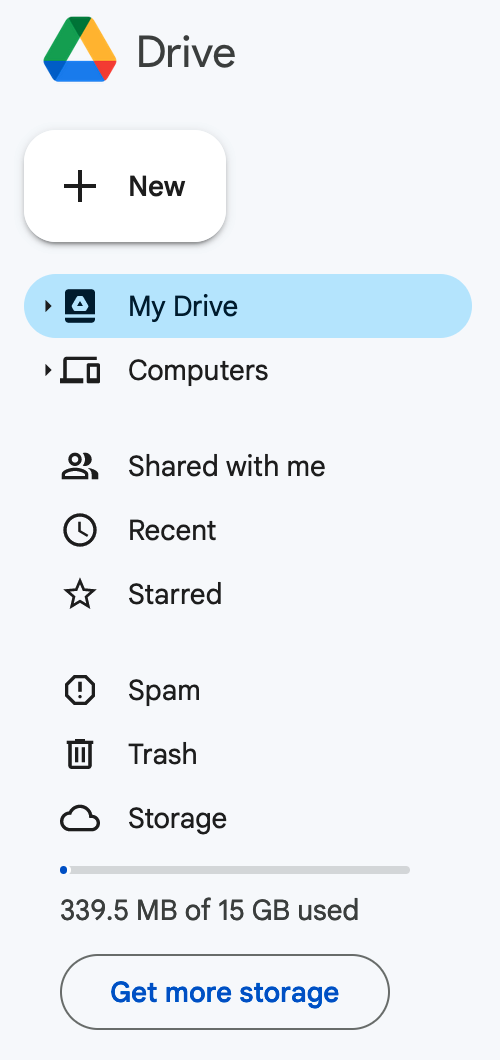
Google Drive: + New
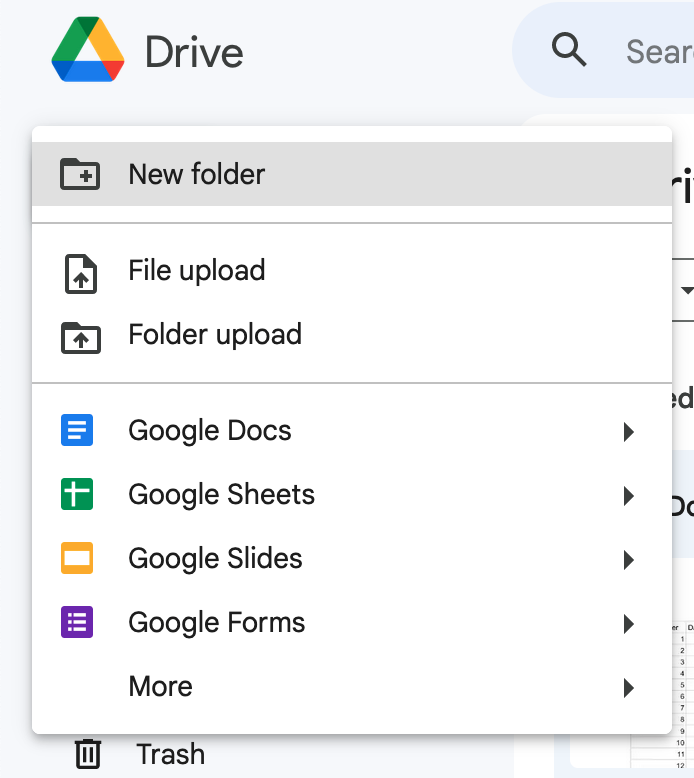
Google Docs
Write reports, create joint project proposals, keep track of meeting notes, and more.

Google Docs: New
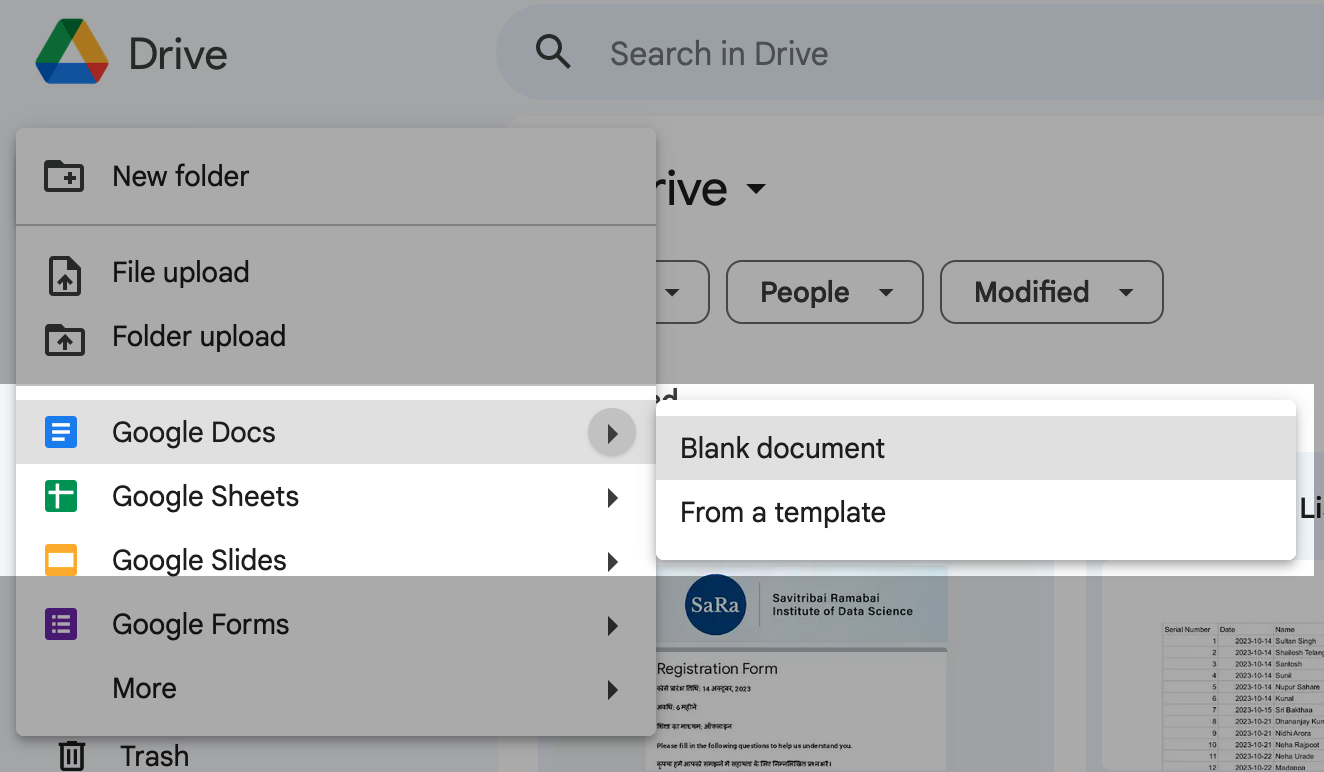
Google Docs: Edit Text

Google Docs
Add images, tables, links and more
Image:Insert an image from your computer, the web, Drive, and more.Table:Select the number of columns and rows to create a table.Drawing:Create pictures, flowcharts, diagrams, and more.Link:Add a link to a webpage or a header or bookmark in your document.Chart:Add different types of charts, or add a chart from Sheets.Bookmark:Add shortcuts to specific places within your document.Table of contents:Create an autogenerated table of contents that links to each heading (where you’ve applied heading styles).
Google doc: search
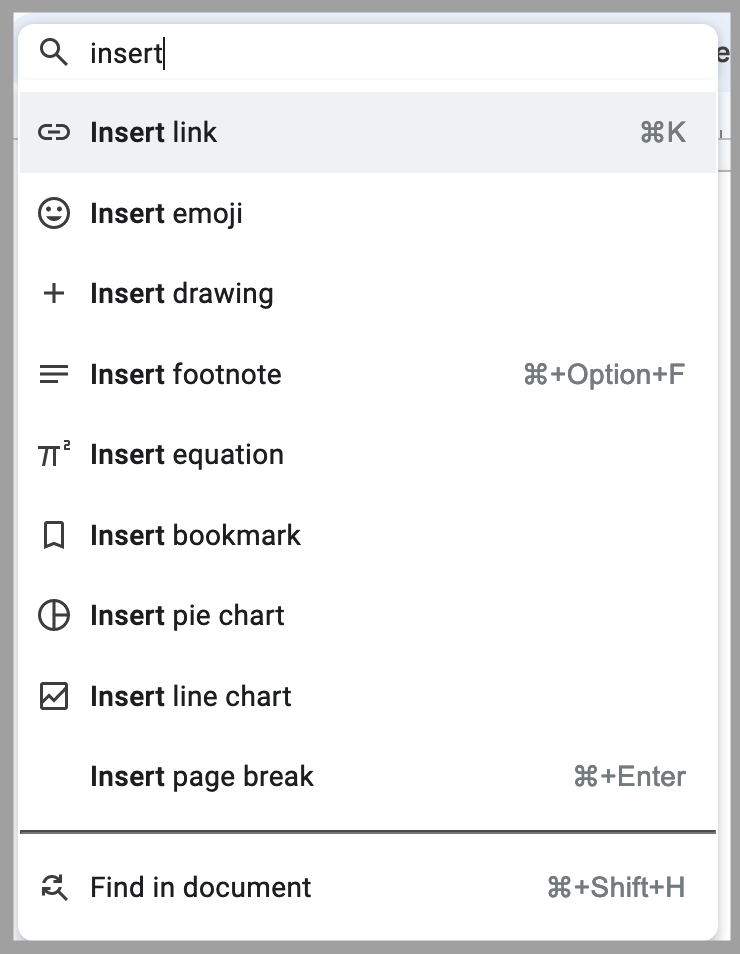
Google Doc
Copy, email, or version your document
Make a copy:Create a duplicate of your document.Download as:Download your document in other formats, such as Microsoft Word or Adobe PDF.Email as attachment:Send a copy of the document to people. You can change the format.Version history:See all the changes you and others have made to the document or revert to earlier versions.Publish to the web:Publish a copy of your document as a webpage, or embed your document in a website.
Google Doc: Share

Google Doc: Collaborate

Google Sheet
Create spreadsheets for your data and collaborate with your colleagues.
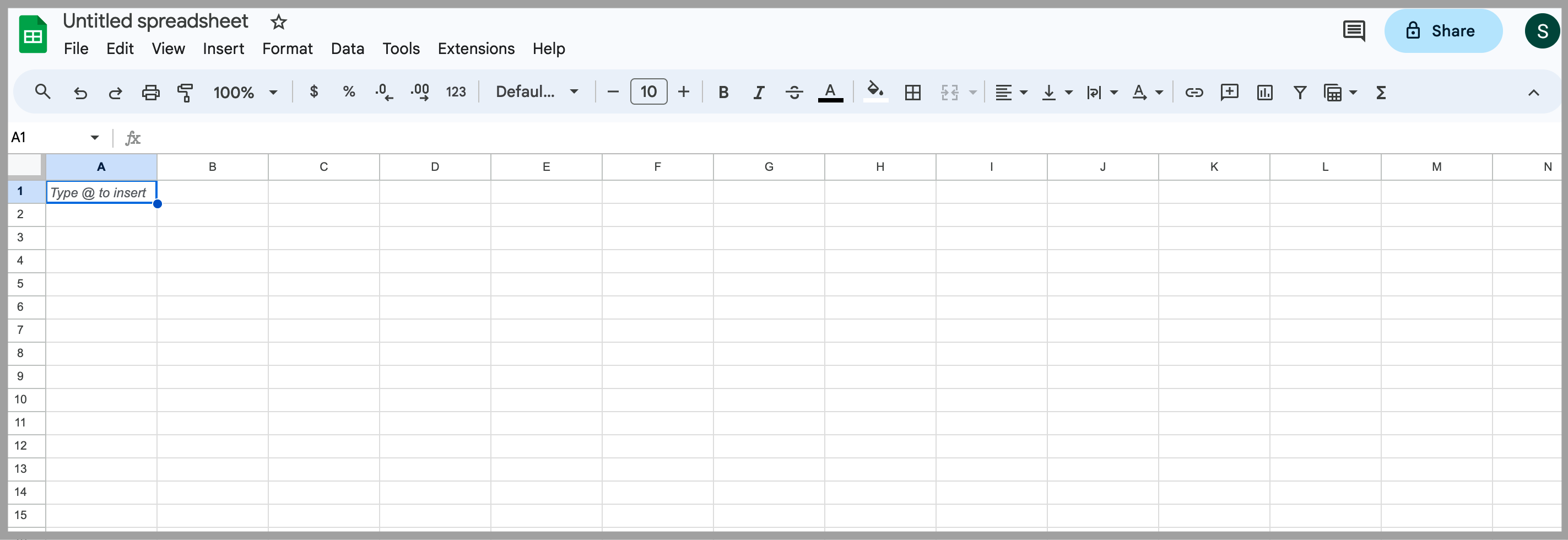
Google Sheet: New
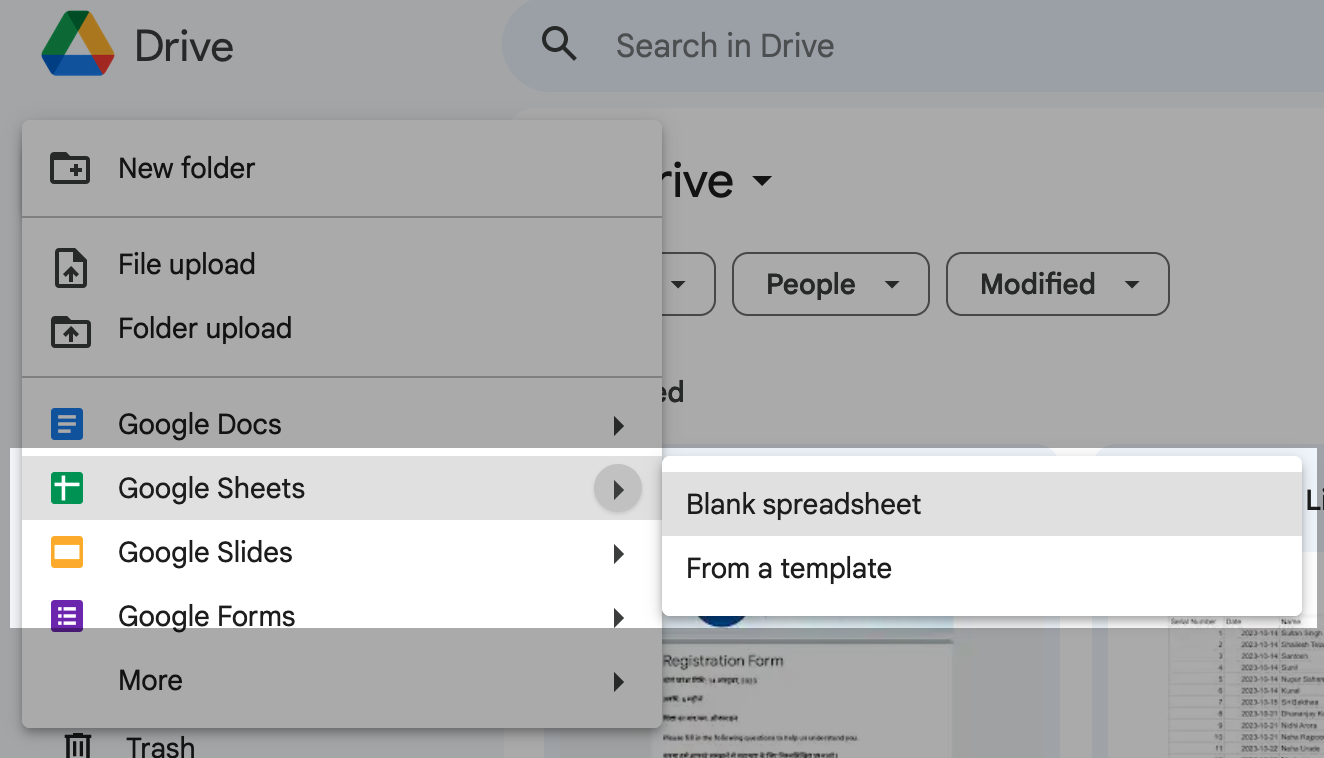
Google Sheet: Work with data
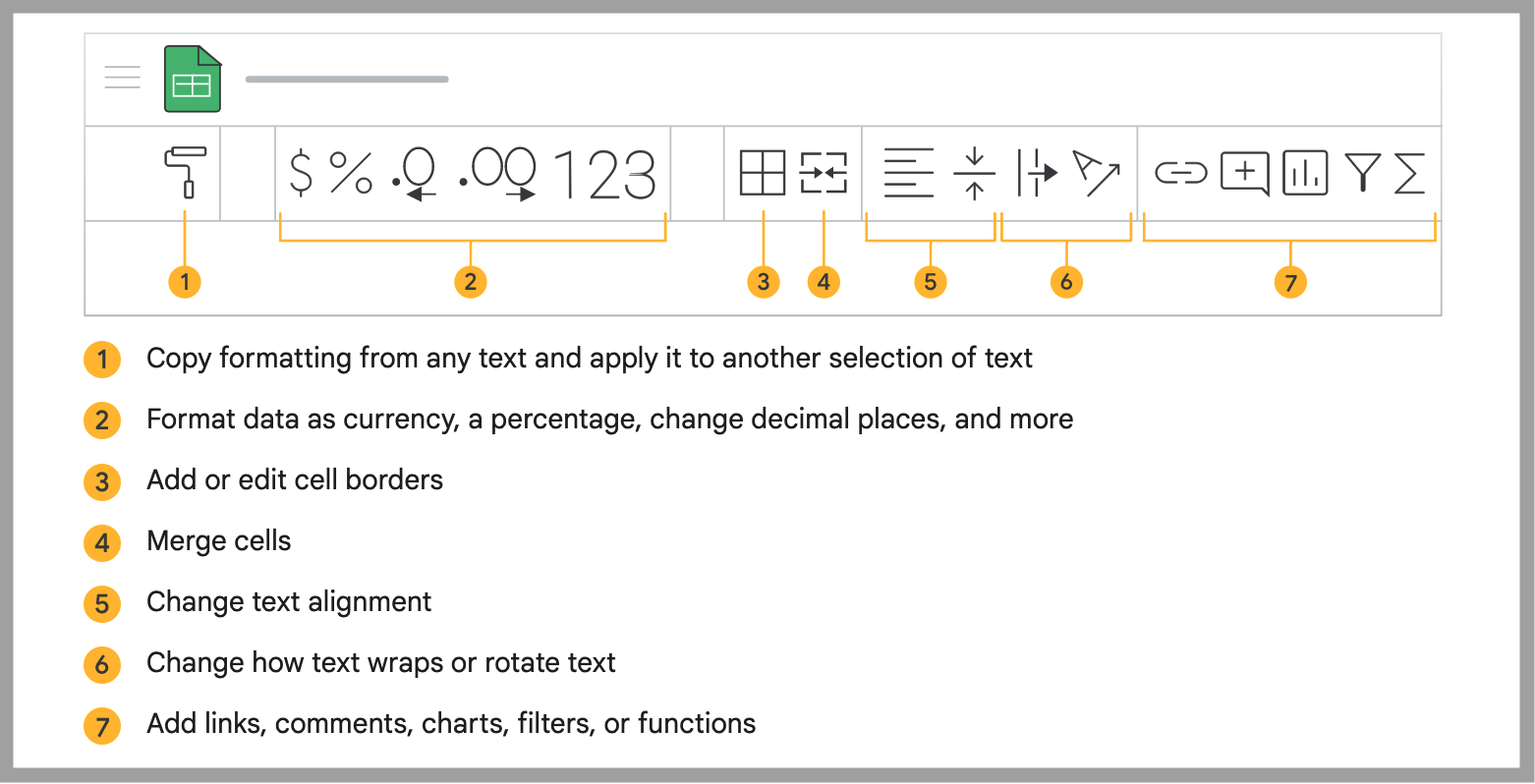
Google Sheet
Add rows, columns, and cells:
Select the row, column, or cell near where you want to add your new entry.
Right-click the highlighted row, column, or cell > Insert > choose where to insert the new entry.
Google Sheet
Delete, clear, or hide rows and columns:
Right-click the row number or column letter.
Click Delete, Clear, or Hide.
Google Sheet
Delete cells:
Select the cells.
Right-clickand thenDelete cellsand thenShift left or Shift up.
Move rows or columns: Select the row number or column letter and drag it to a new location.
Google Sheet
Move cells:
Select the cells.
Point your cursor to the top of the selected cells until a hand appears.
Drag the cells to a new location.
Google Sheet
Group rows or columns:
Select the rows or columns.
Click Dataand thenGroup rows or Group columns.
Freeze header rows and columns: Keep a row or column in the same place as you scroll through your spreadsheet. On the menu bar, click Viewand thenFreeze and choose an option.
Google Sheet: Share

Google Sheet: Collabrate

Google Sheet
Copy, email, or publish your spreadsheet
Make a copy—Create a duplicate of your spreadsheet. This is a great way to create templates.Download as—Download your spreadsheet in other formats, such as Excel or PDF.Email as attachment—Email a copy of your spreadsheet.Version history—See all the changes you and others have made to the spreadsheet or revert to earlier versions.Publish to the web—Publish a copy of your spreadsheet as a webpage or embed your spreadsheet in a website.
Google Slides
Create & collaborate with your team on professional pitch decks, project presentations, training modules, & more.
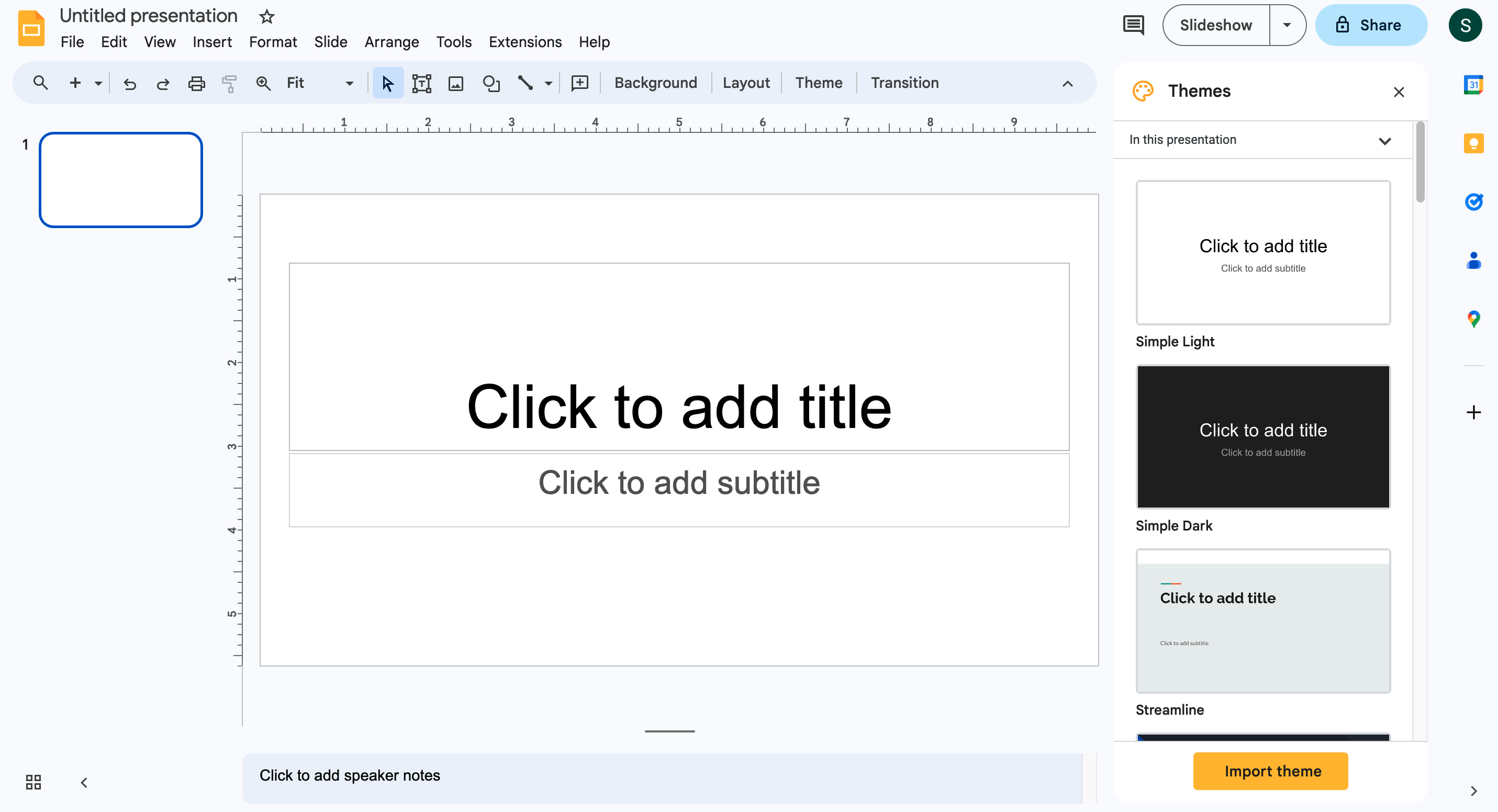
Google Slides: New
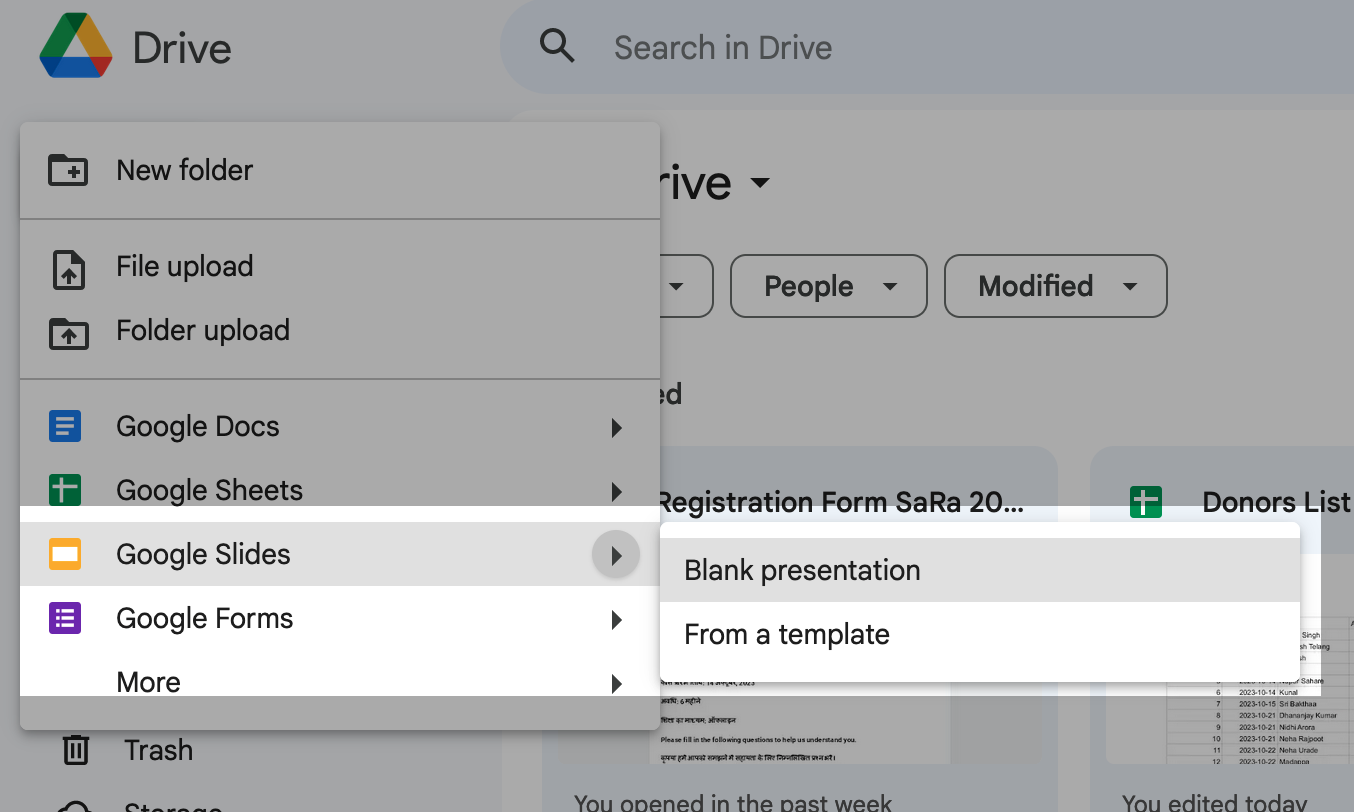
Google Slides:
Add and organize slides

Google Slides:
Add content to slides
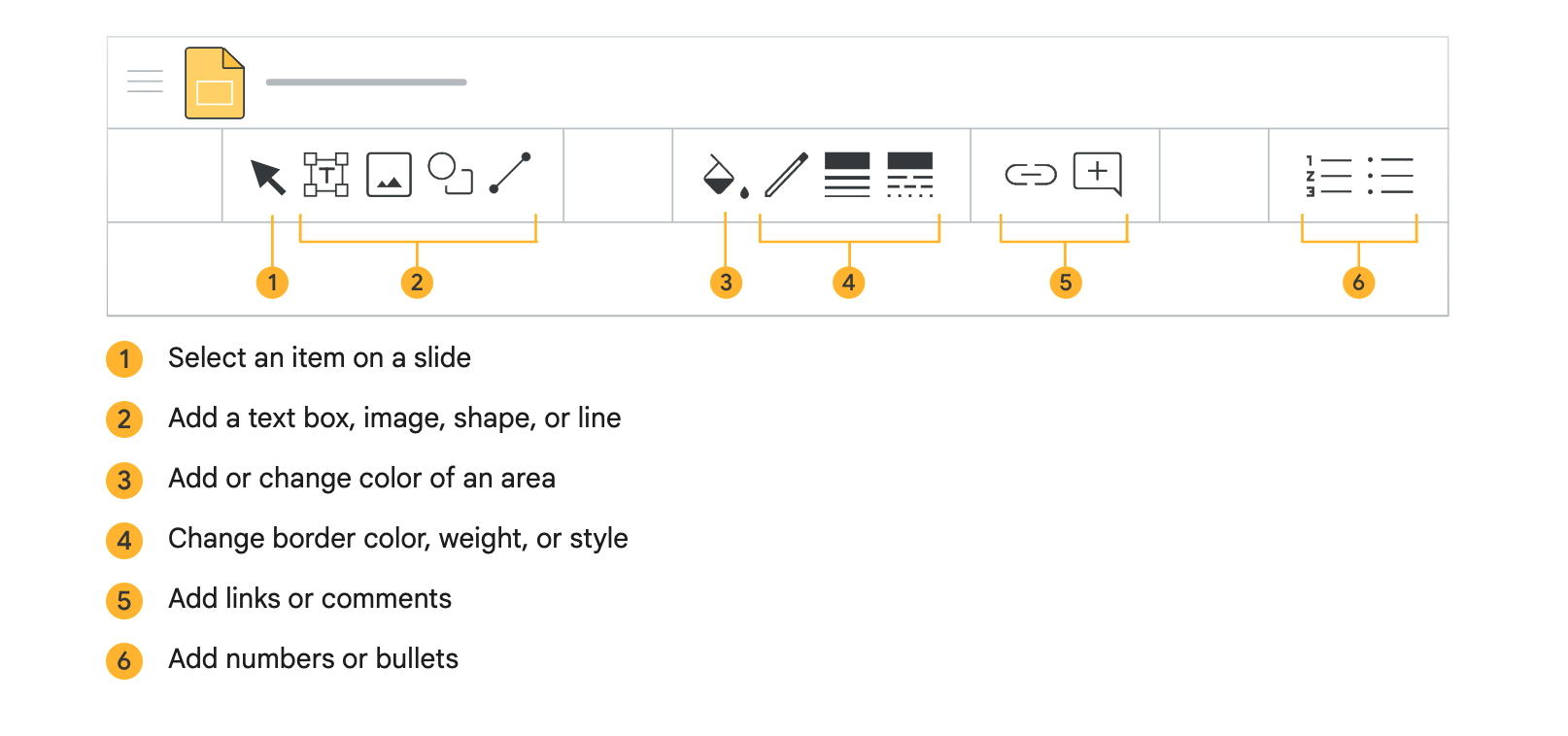
Google Slides:
Import slides—Add slides from another presentation to your current slide deck.Make a copy—Create a duplicate of your presentation. This is a great way to create templates.Download as—Download your presentation in other formats such as Microsoft PowerPoint or Adobe PDF.Email as attachment—Email a copy of your presentation.Version history—See all the changes you and others have made to the presentation, or revert to earlier versions.Publish to the web—Publish a copy of your presentation as a webpage, or embed your presentation in a website.
Google Drive
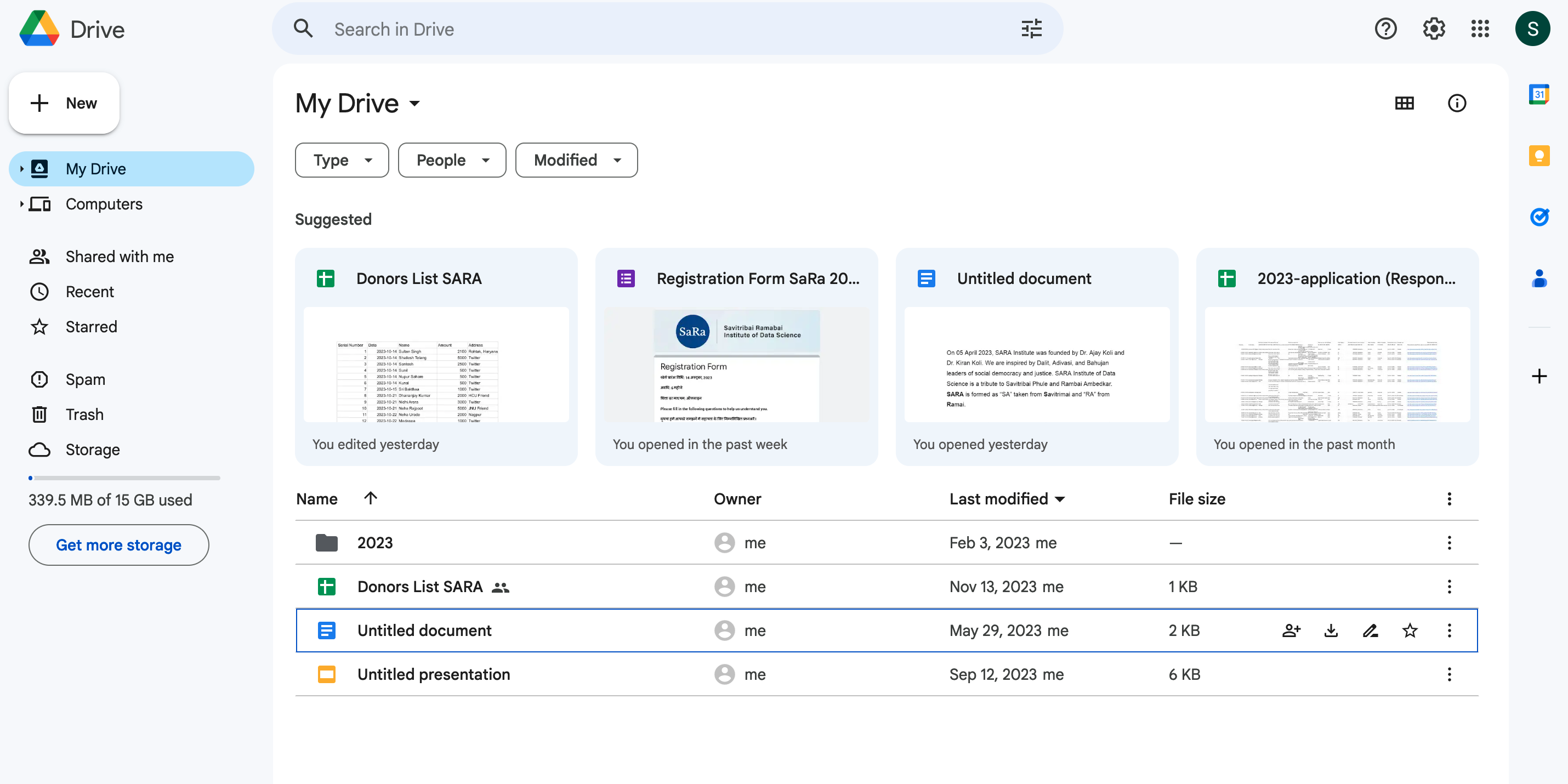
Session Info
These slides are available on this link https://sara-edu.github.io/slides-computer-basics/
- R, RStudio and Quarto are used on macOS to prepare these slides. Below is a detailed information about the R packages and applications used in preparing these slides.
Thank
You


